Heritage and Holidays: A Magical Visit to Braga and Guimarães
by Monika Suchoszek
While visiting friends in Pedralva, exploring Portugal’s third-largest city was a must. Our journey began with a bus ride, and we arrived near the beautiful Park Avenida Central, where a charming Christmas market awaited us. The park was adorned with festive decorations, immersing us in the holiday spirit. We decided to return to the same place after dark to experience the market illuminated by Christmas lights. That turned out to be a great decision because, that evening, the market hosted a live music performance as part of the 29th edition of CELTA at Theatro Circo. Themed “Urban CELTA,” the event brought together over 400 artists from various universities. It was my first time experiencing this type of music, and I thoroughly enjoyed it. As I later learned, a “tuna” is a group of university students from Spain, Portugal, or Latin America who perform traditional music in traditional university dress. Originating in the 13th century, these groups once played to earn money or food. Today, they continue the tradition for fun, travel, and meeting new people.
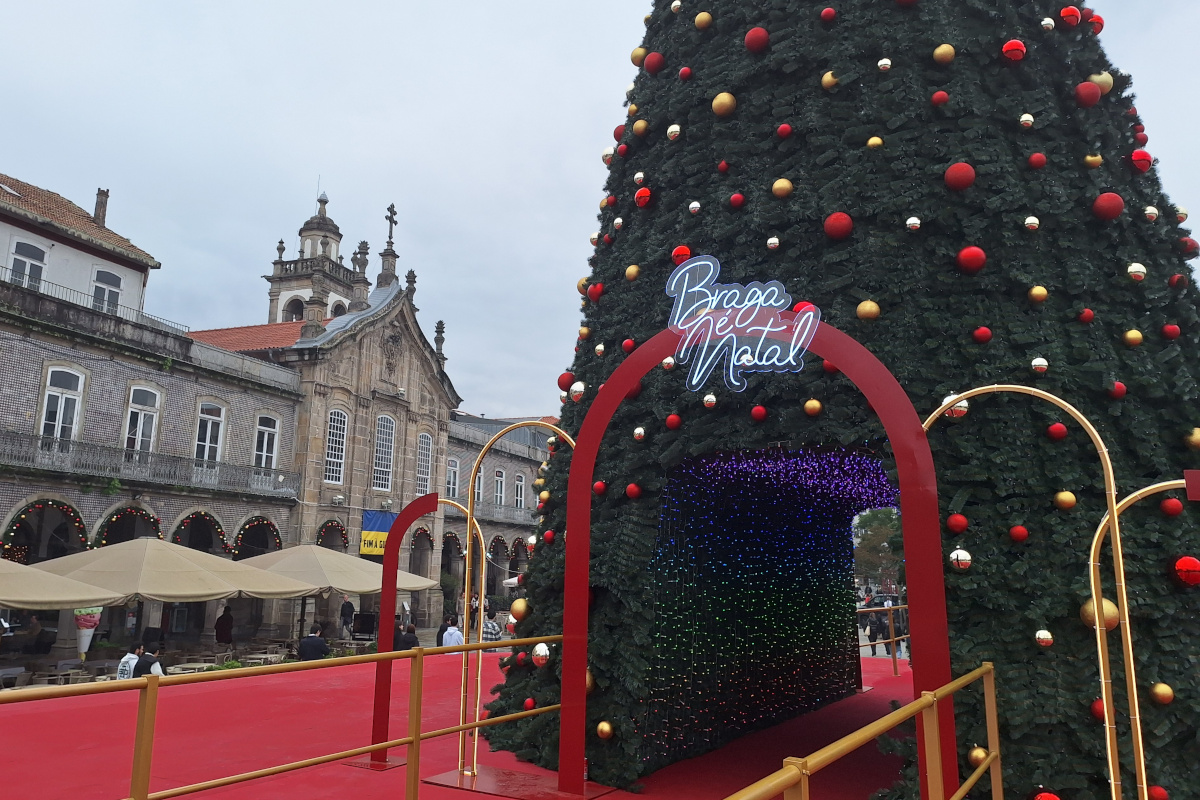
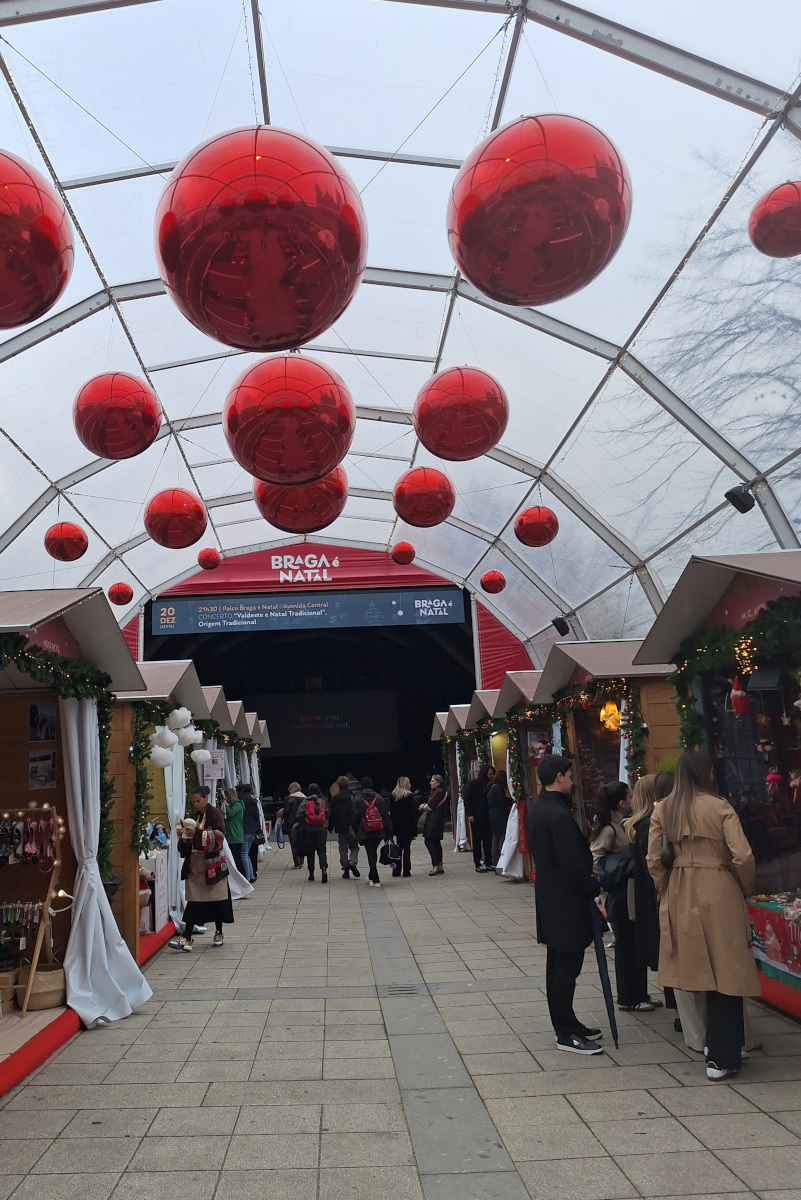
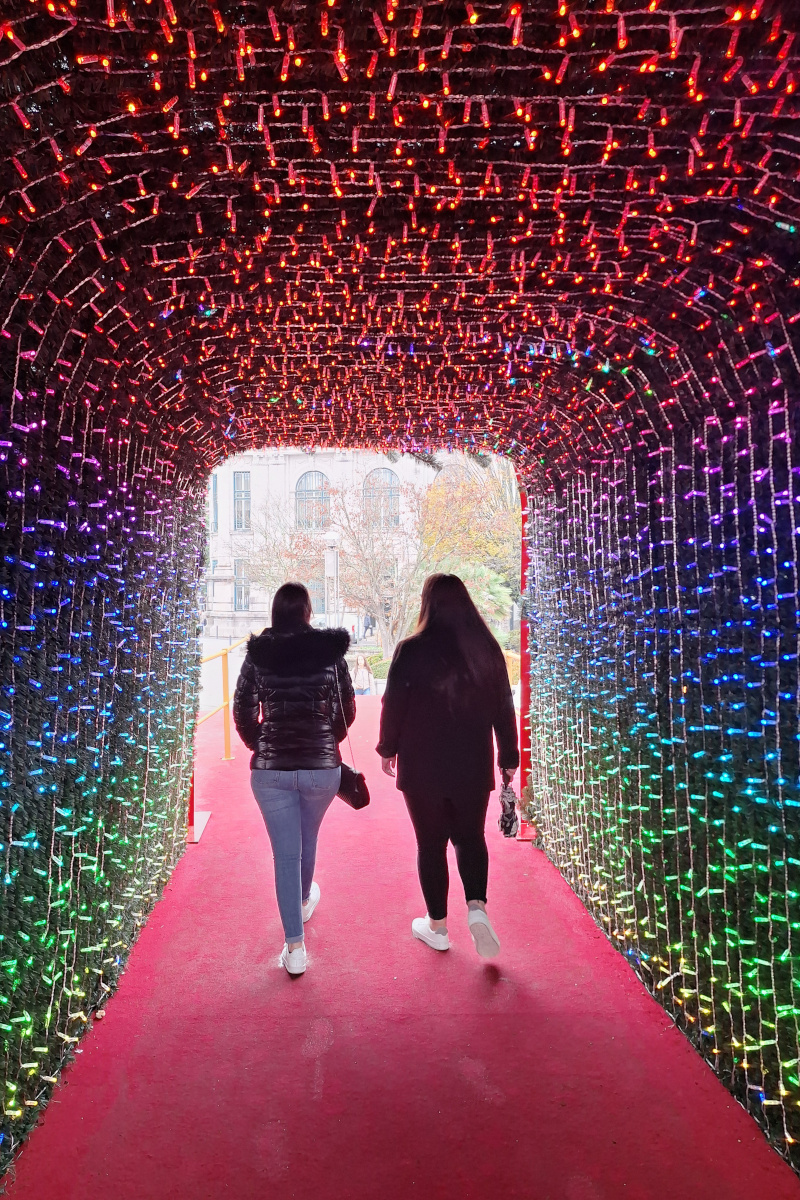
There are about 35 churches in the city of less than 200-thousand residents. The “Santa Maria de Braga” Cathedral, with small museum, isn’t even the most famous one, but more about other places will follow in the next part of this post. The area around the cathedral is a great spot for finding unique souvenirs, with plenty of shops to browse.

Other highlights of the historical city center include: The Arch of the New Gate (top left photo below). This triumphal arch marks the western entrance to the city’s medieval wall. It is located at the start of R. Dom Diogo de Sousa, the main shopping street. Strolling down this street is worthwhile, as it is lined with beautiful buildings adorned with blue-tiled facades. It’s also where locals gather on Christmas Eve to eat bananas and drink Muscat wine in the hours before Christmas dinner. This tradition, started over three decades ago by the owner of Casa das Bananas, still attracts thousands of people.
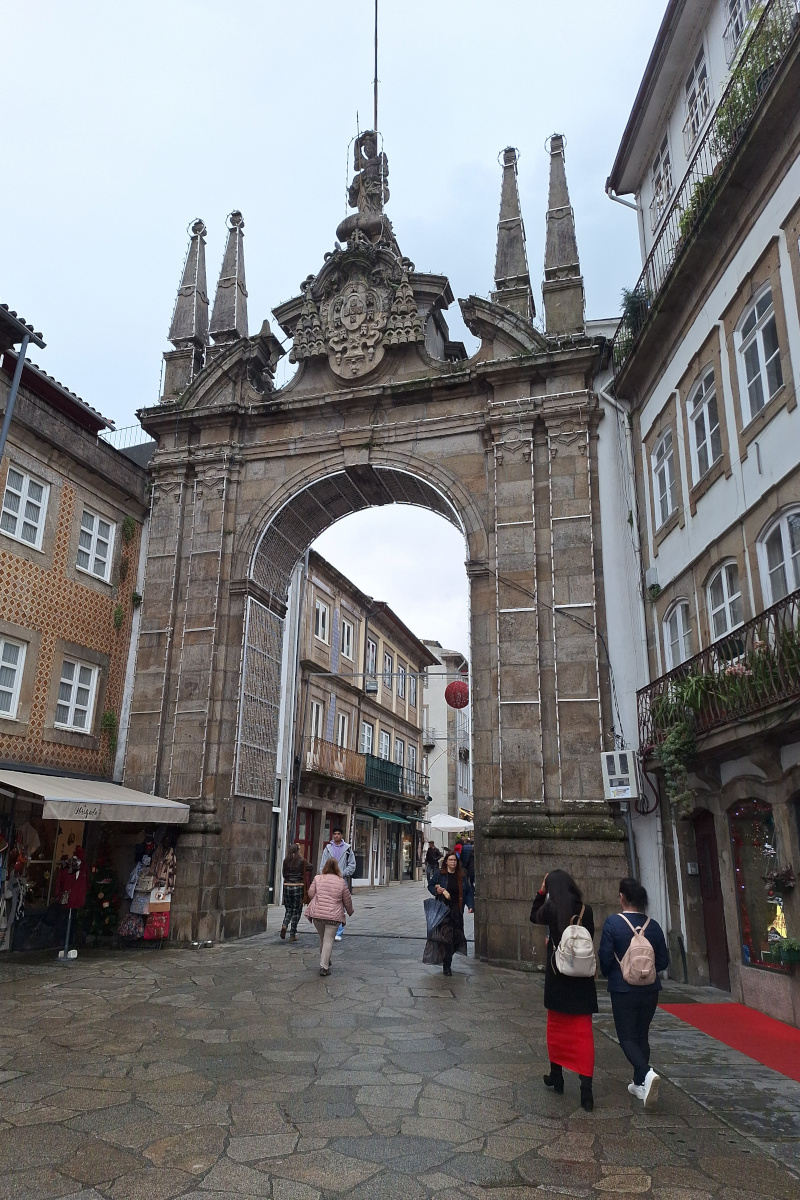
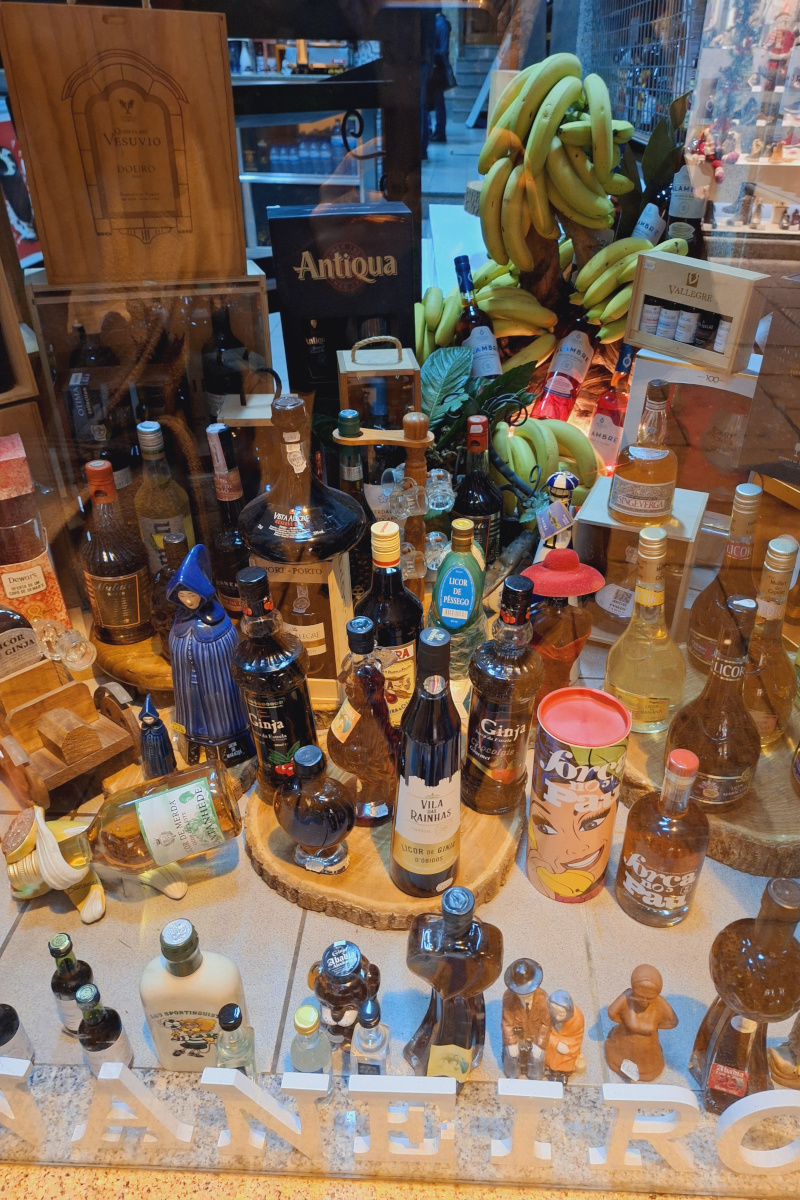
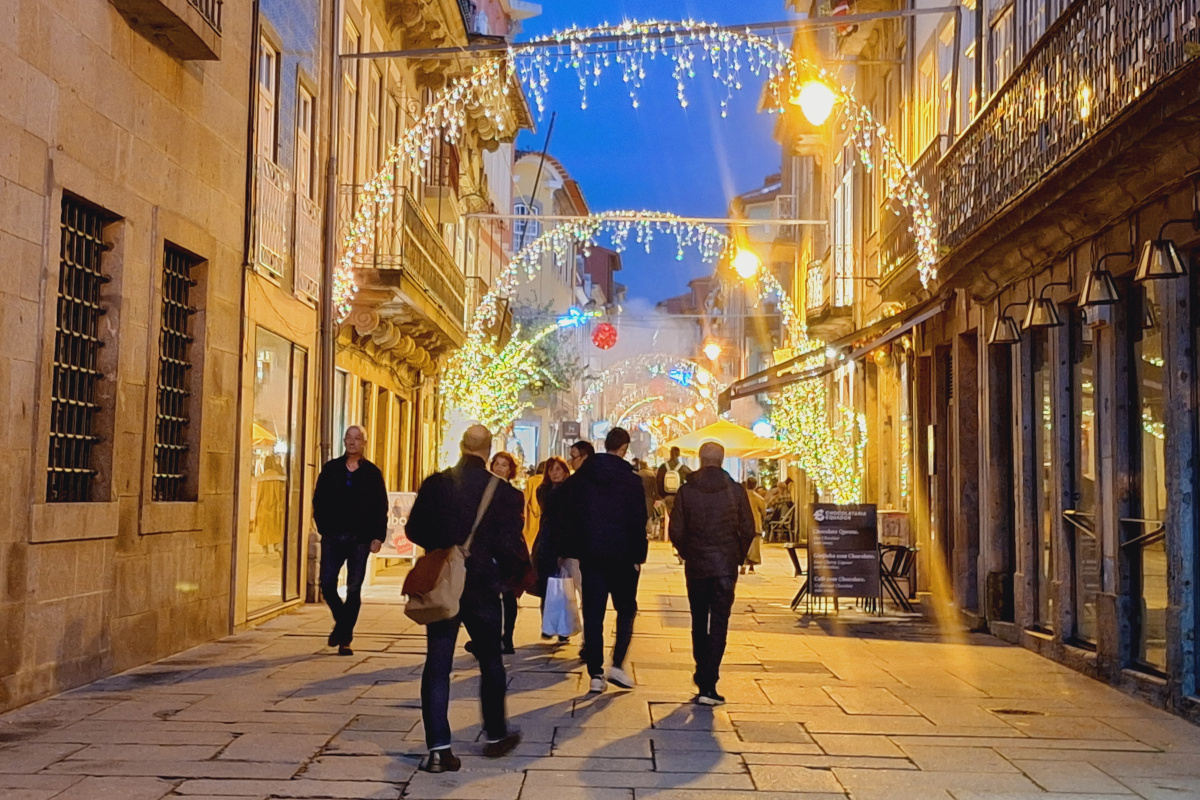
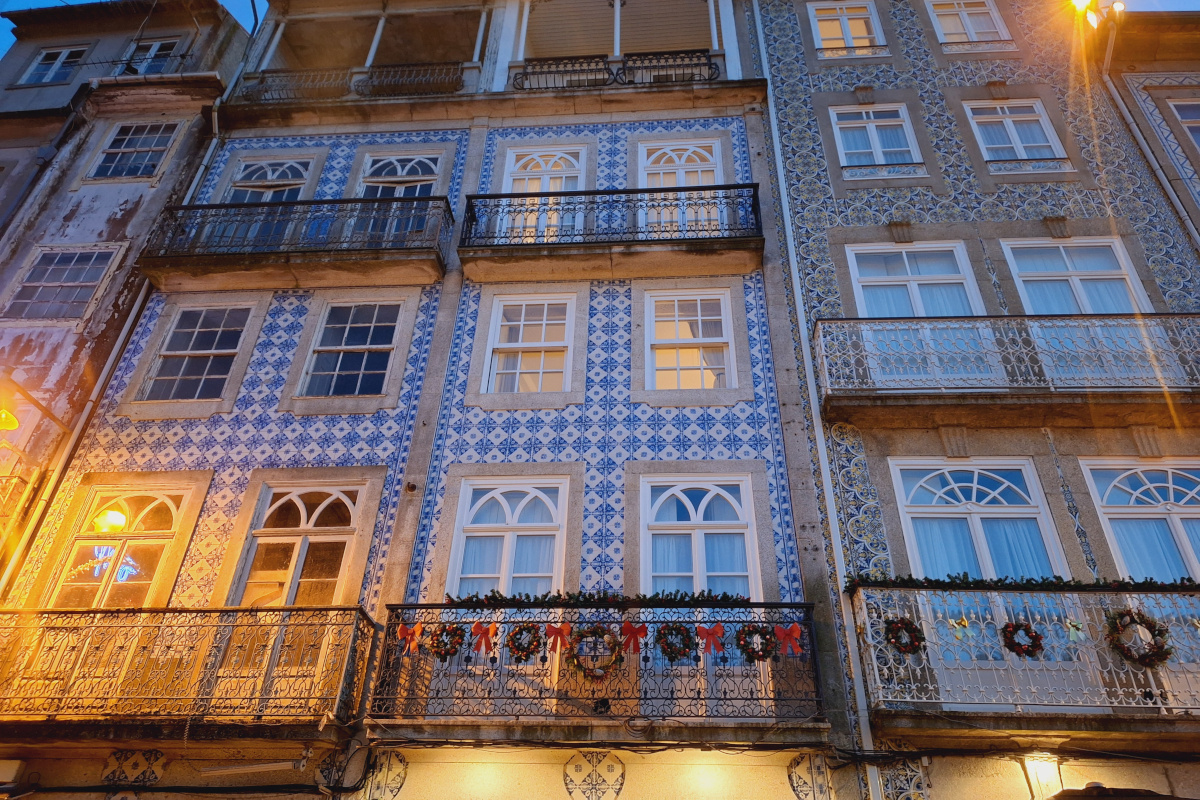
Braga City Hall: An 18th-century building housing the local government.
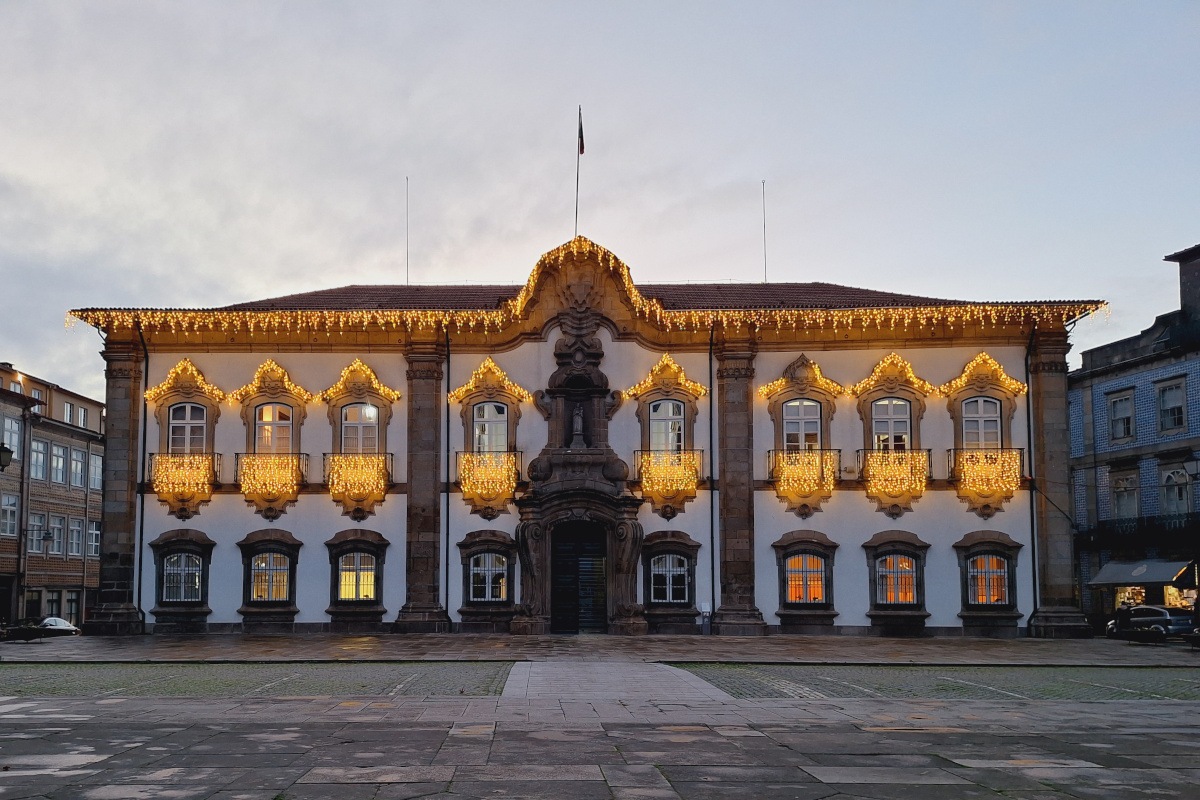

City Market (Mercado Municipal): Recently renovated with a modern wooden roof, this market features stalls selling
flowers, vegetables, fruits, cheese, coffee, and more. Although we visited late in the afternoon when many stalls were
closed, we still managed to buy some delicious mandarins from a local vendor. December is also a great time for spotting
orange and mandarin trees on many streets during our walk. The best oranges are typically in season from late fall through
early spring, with peak freshness often occurring between December and March.

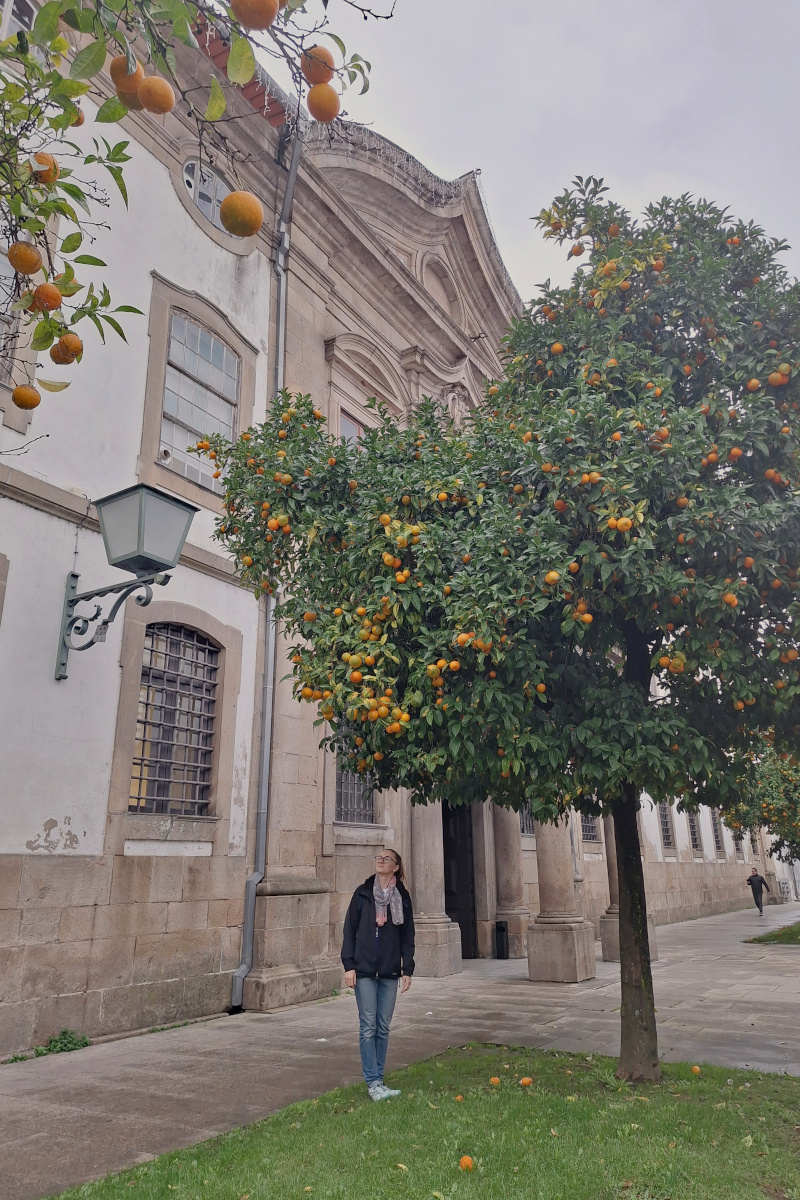
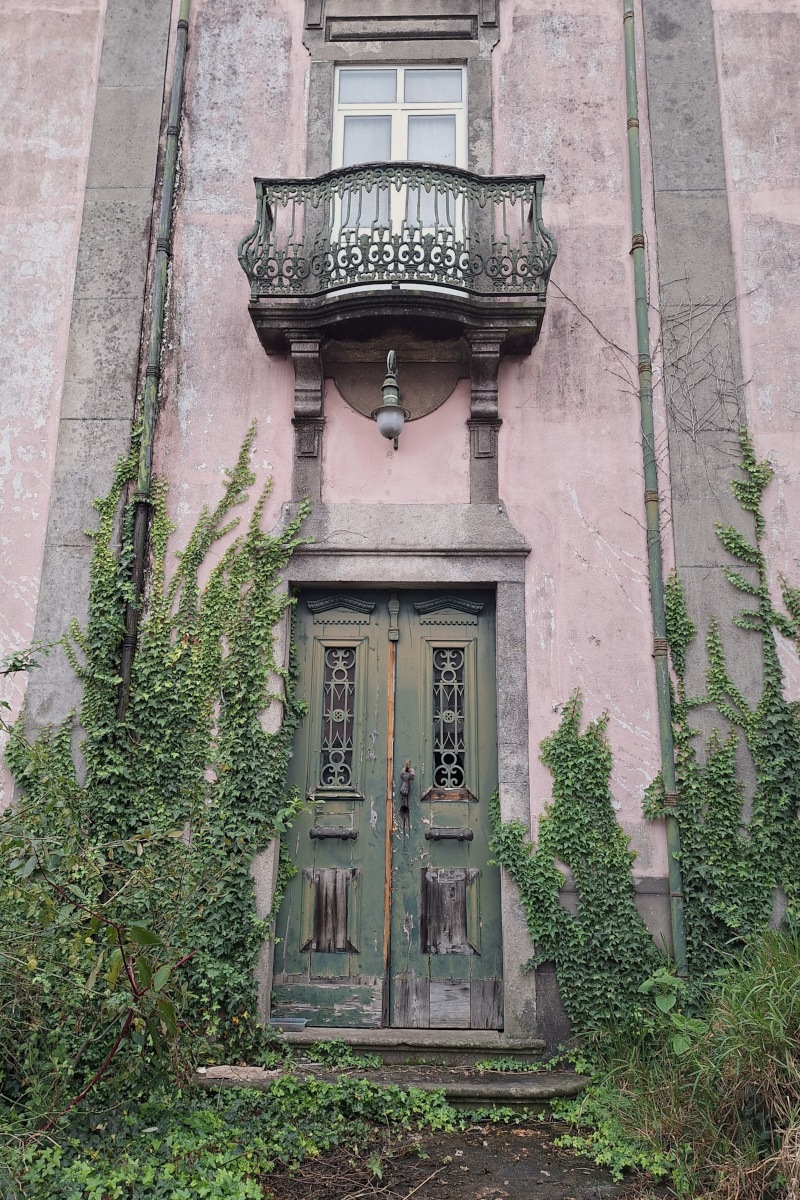
Santa Barbara Garden This stunning garden, located next to the Archiepiscopal Palace, was a highlight of our walk. The colorful flower beds, beautiful central fountain, and well-maintained design made it a visual delight. The garden also offers views of the medieval and Baroque wings of the palace, including a section damaged by fire in 1834. Next to the garden is the public library and district archive, housed in the palace’s Baroque wing. The area is Very well maintained, and I was surprised to find such a beautiful spot in the heart of a busy city.
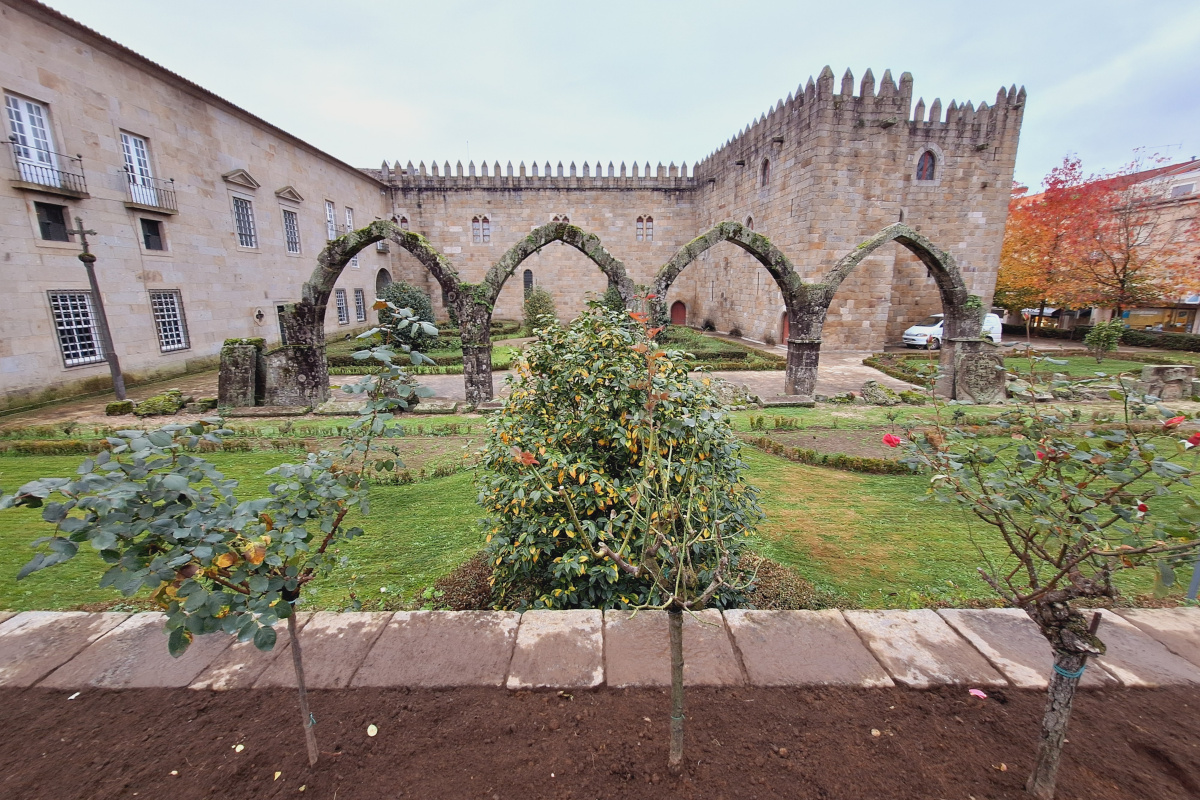
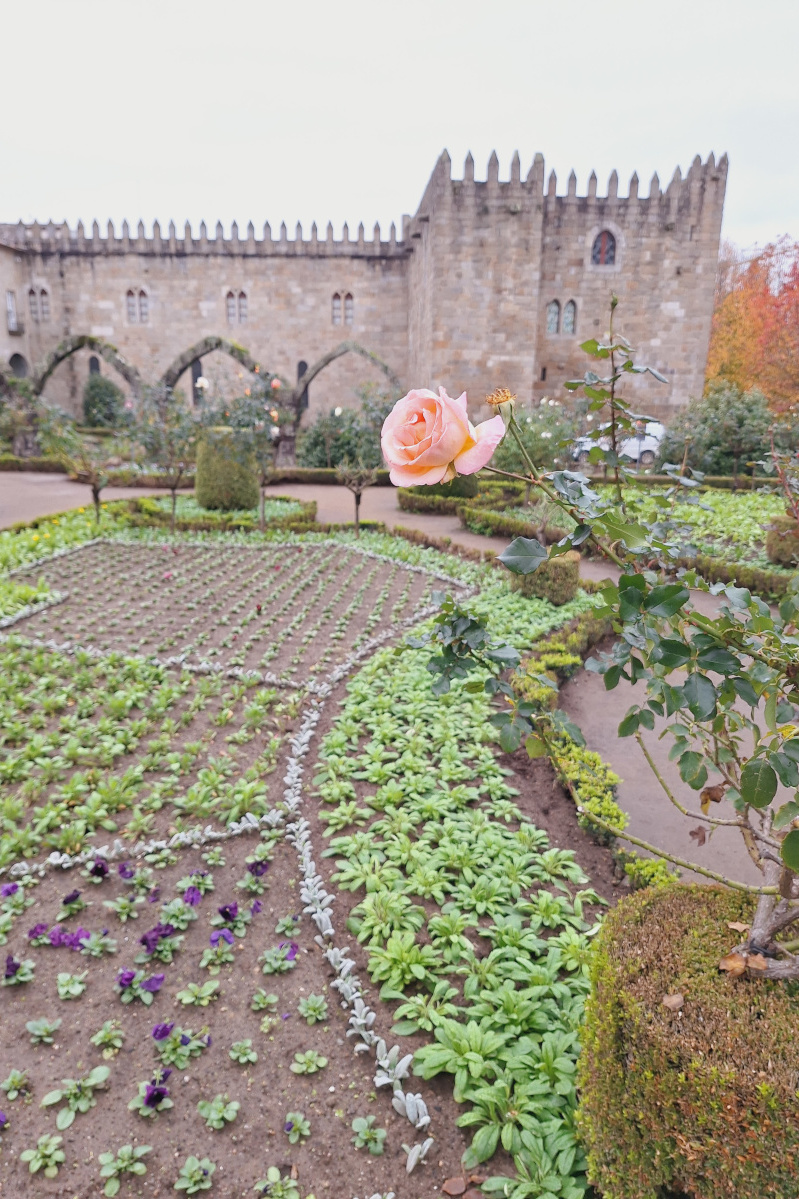
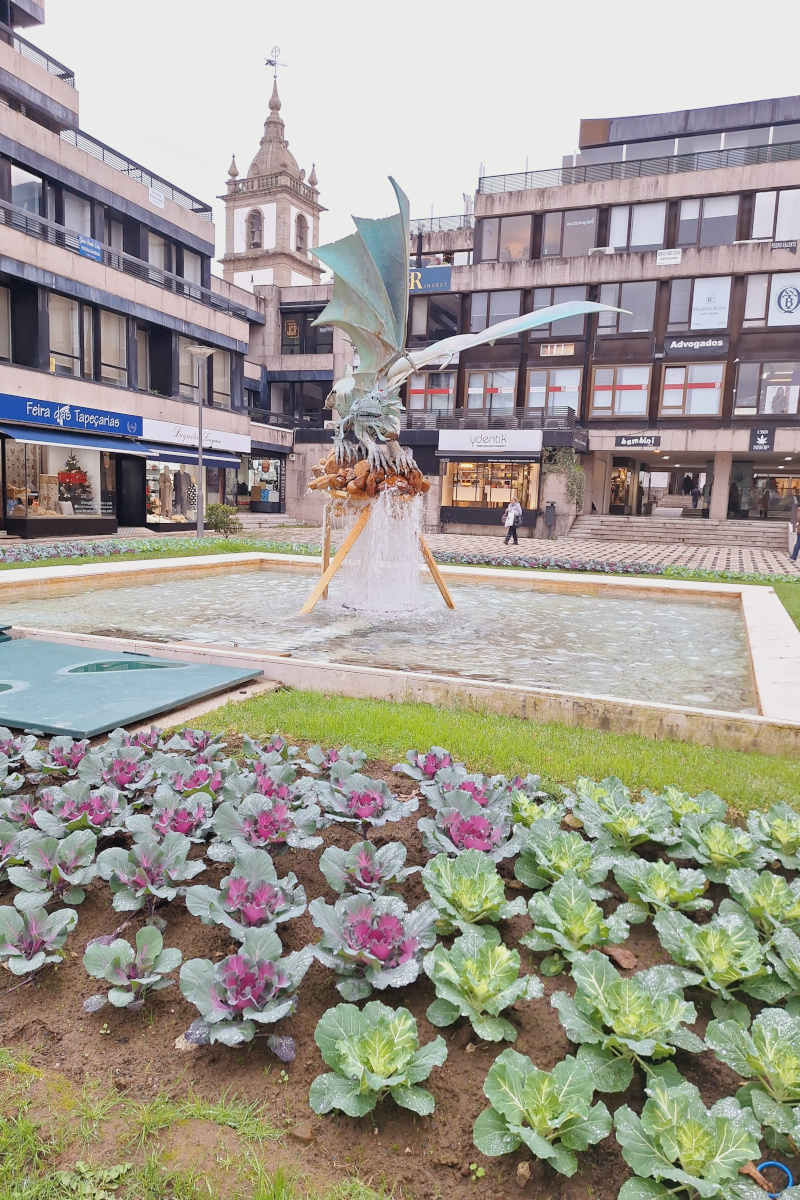
The next day, we planned to visit two famous sanctuaries near Braga. Before setting off, we decided to fuel up with a popular local dish. Taberna Belga is renowned for its francesinhas—a unique take on the traditional Portuguese dish that differs from the famous Porto version. They don’t take reservations, so be prepared to wait for a table. Francesinha is a type of sandwich originating in Porto, made with thick slices of white bread, Portuguese ham, sausage, cheese, and steak. The version in Braga is creamier and more buttery. It includes bread, wet-cured ham, linguiça, fresh sausage like chipolata, steak or roast meat, and is topped with melted cheese and a thick, spiced tomato sauce. This sauce, which resembles a tomato cream soup, is poured over a croque madame.
Our first stop was the Sanctuary of Our Lady of Sameiro, which offers panoramic views of the city, surrounding mountains, and the River Minho. Located over 350 meters above Braga, it’s a serene and spiritual site visited by Pope John Paul II in 1982. This is the second-largest sanctuary dedicated to the Virgin Mary in Portugal, with Fátima being the largest Marian sanctuary, and was built in the 19th century. The main Marian festivities take place on the first Sunday of June and the third Sunday of August, drawing thousands of pilgrims from across the region. Pilgrims recite prayers and sing hymns dedicated to the Virgin Mary.
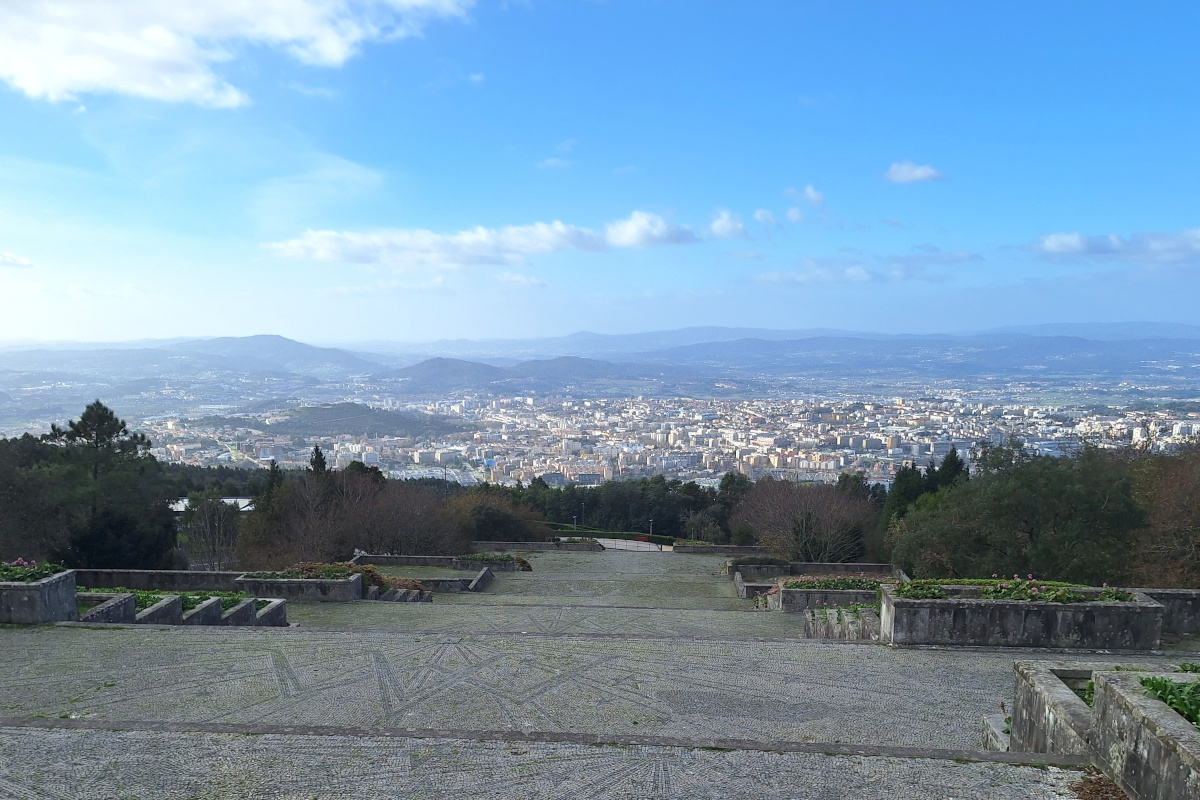
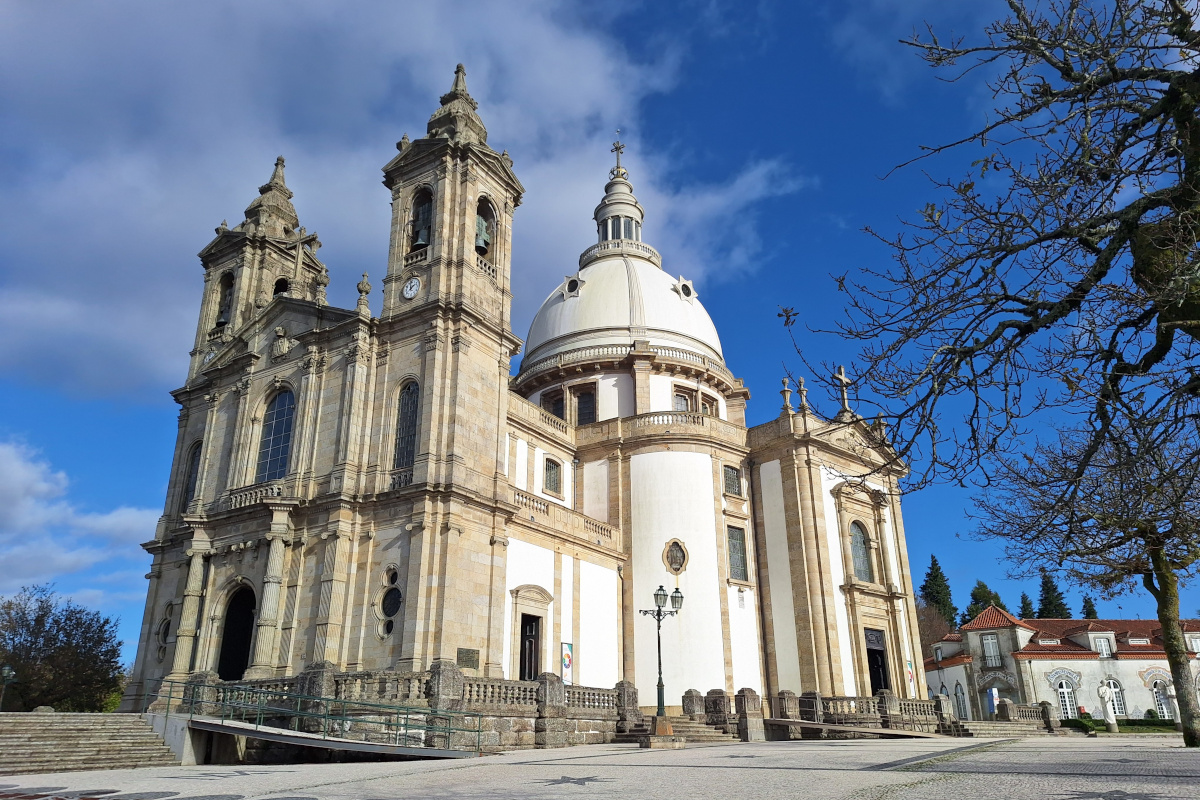
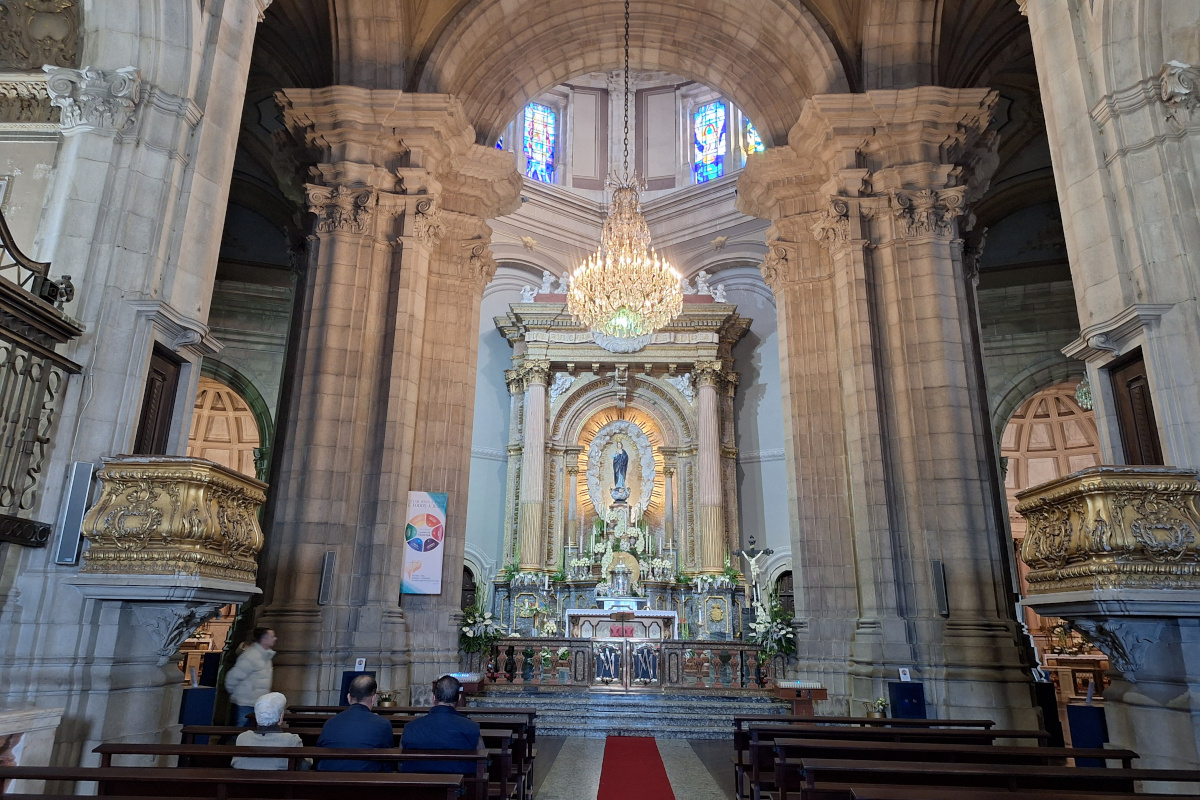
Just 2 km from Sameiro is the Sanctuary of Bom Jesus do Monte, a UNESCO World Heritage Site since 2019. In the 19th century, the area surrounding the church and its grand stairway was transformed into a park. The water-powered funicular, built in 1882, connects the bottom of the hill to the sanctuary and is the oldest funicular in the world operating on this system. This was also the first funicular built on the Iberian Peninsula and remains in use today. The sanctuary is famous for its Baroque-style staircase, consisting of 577 steps. It welcomes over one million visitors annually, including pilgrims, tourists, and locals. Walking down the stairway is a must to fully appreciate its architectural beauty and design (you can take the funicular back up to the church).
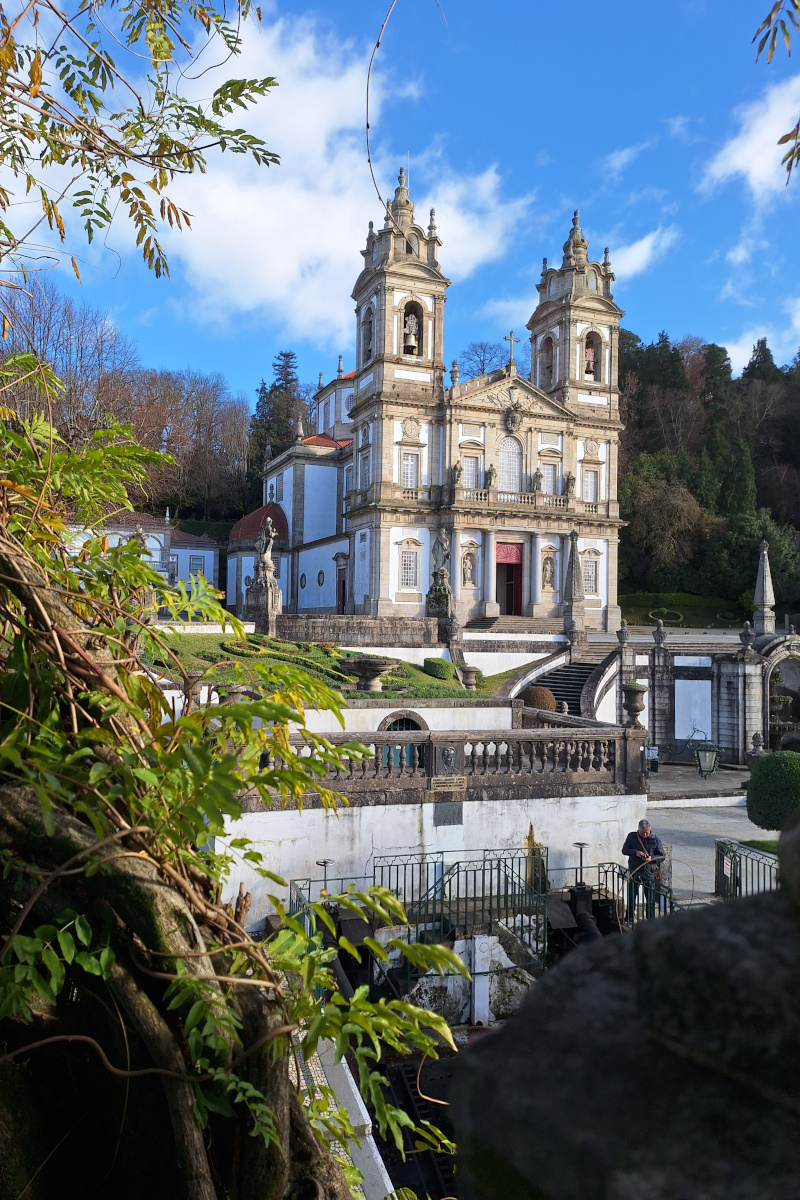
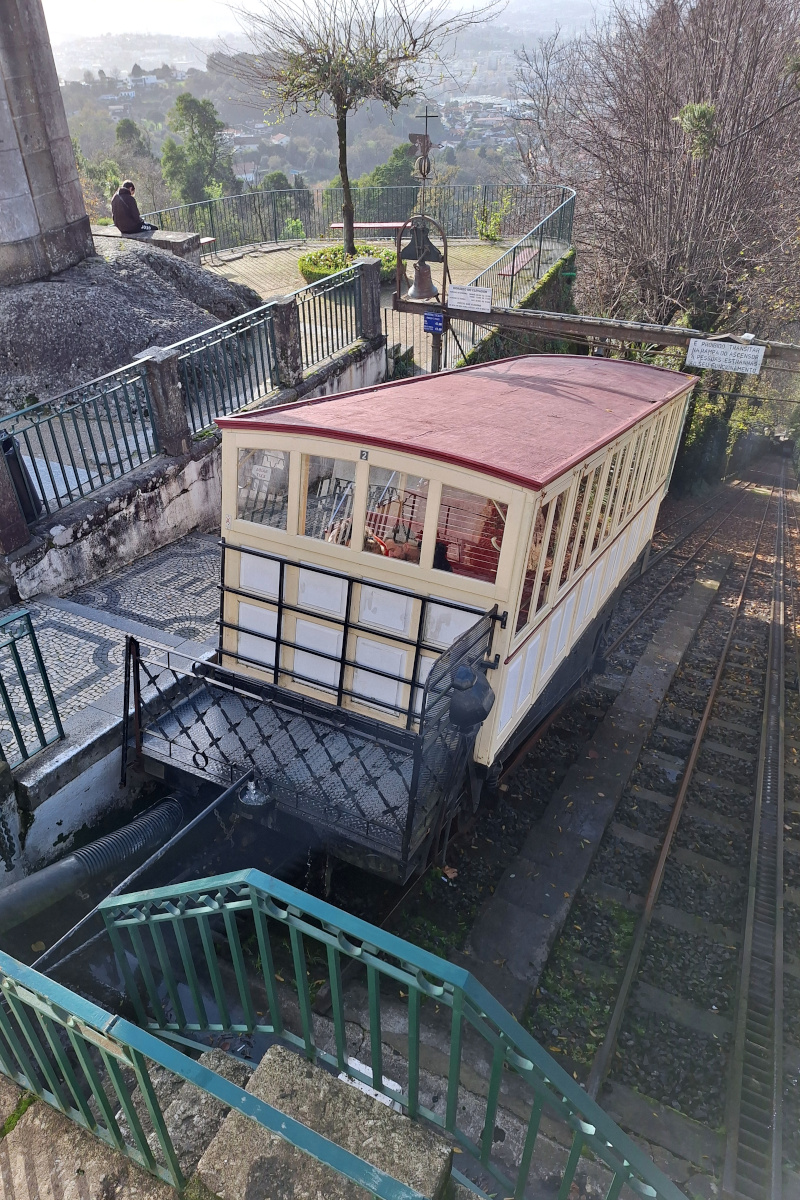
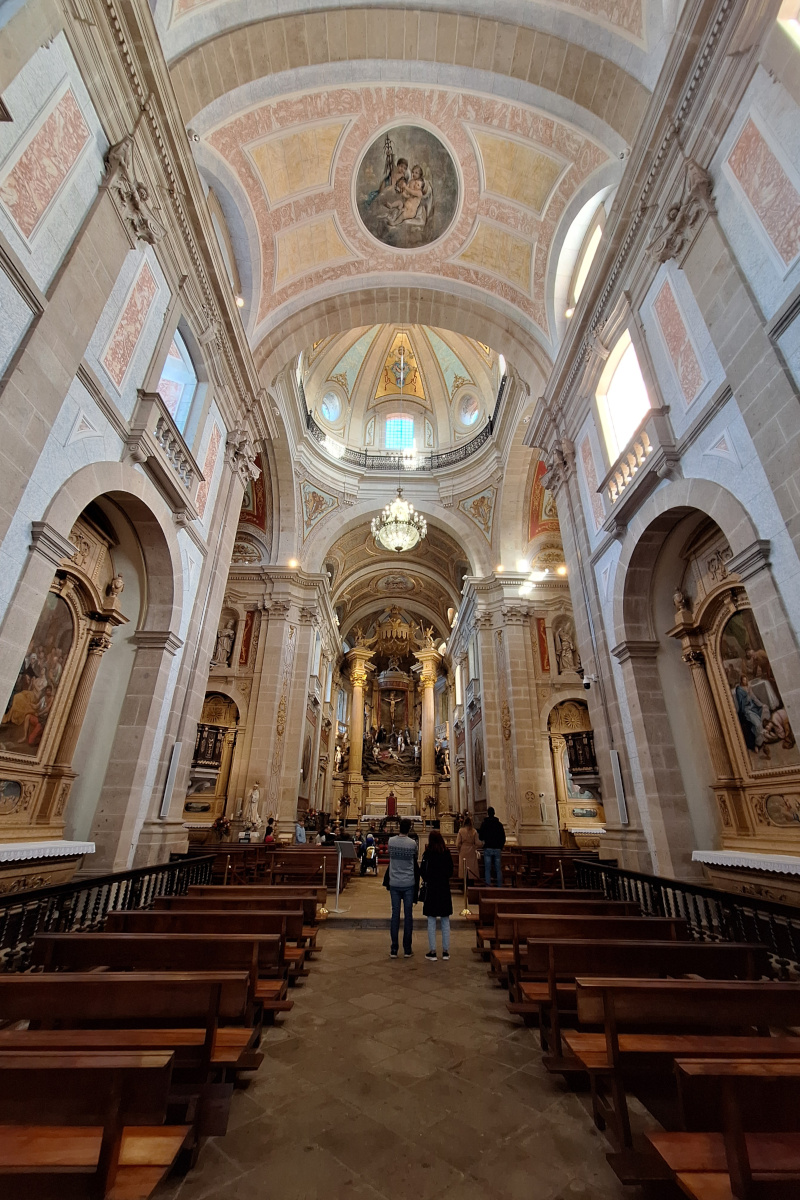
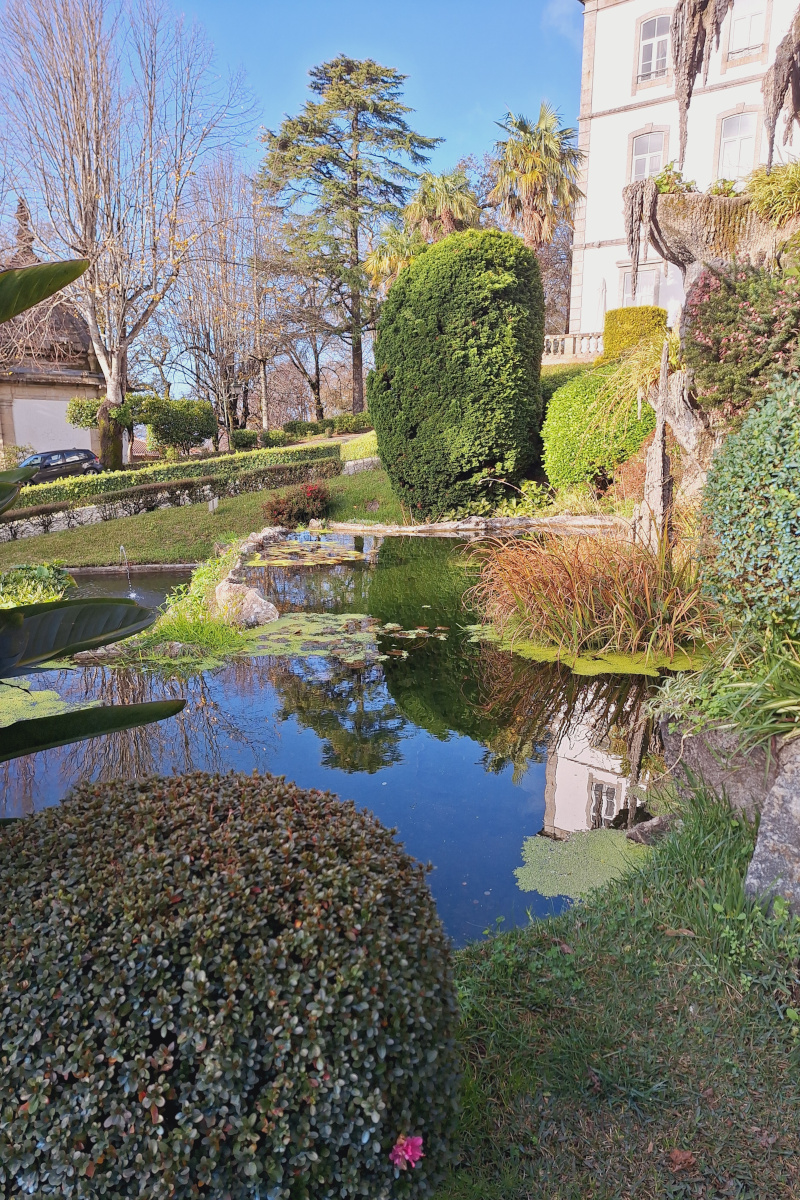
The sanctuary itself is free to enter and features a large park with tall trees and paved walkways, perfect for leisurely strolls or quiet reflection. Benches are scattered throughout, offering places to rest and enjoy the peaceful surroundings, with designated picnic areas. A small artificial lake provides boat rentals, making it an ideal spot for relaxation. The basilica is stunning, and the views of Braga from the top are spectacular.
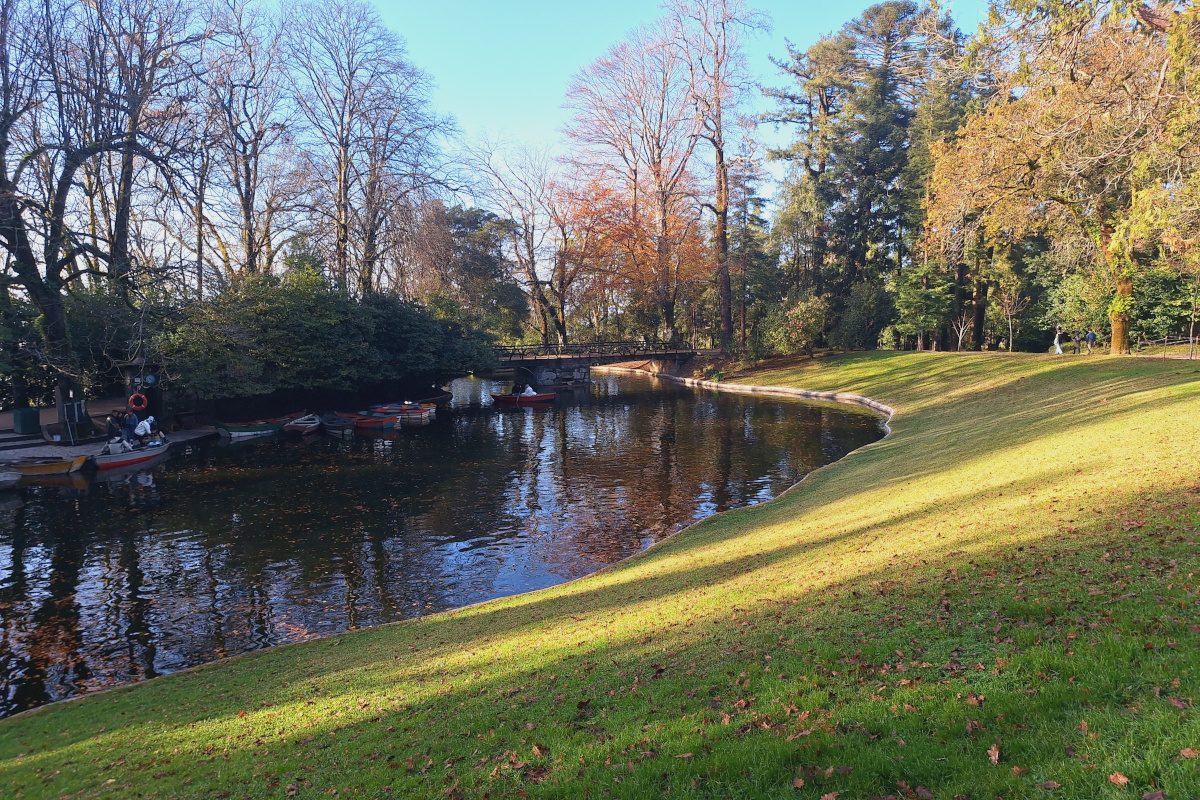
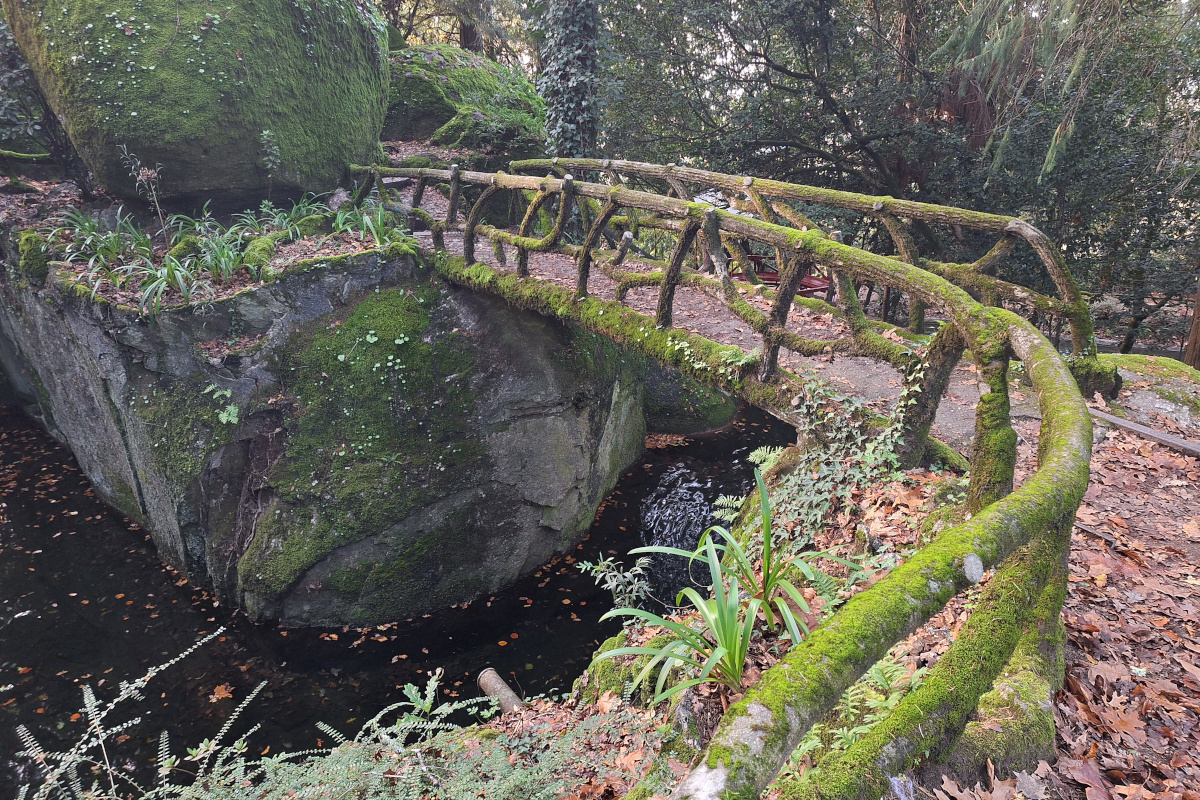
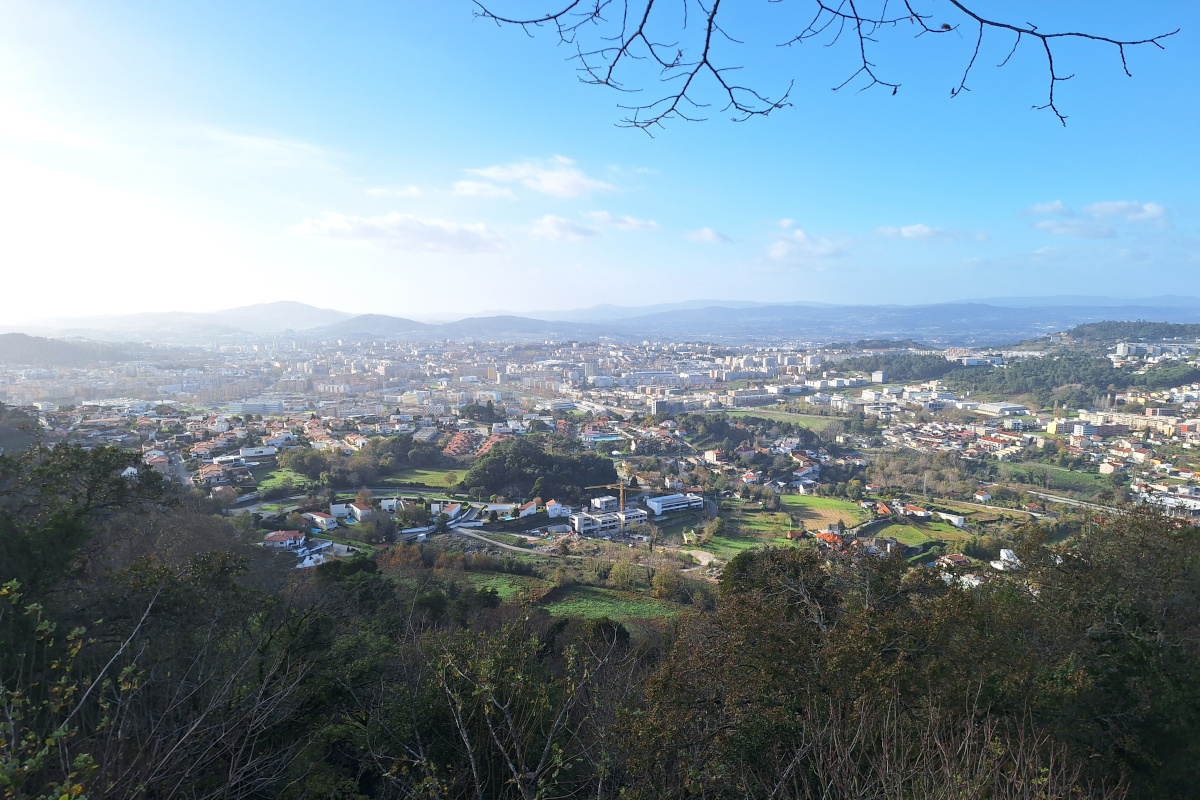
For the afternoon, we planned to drive to Guimarães, often referred to as the birthplace of Portugal because it is where Afonso Henriques, the first king of Portugal, was born. After finding a parking spot, we started our walk to the historic center of the city. The first medieval-looking building we encountered was Torre da Alfândega, with the words “Aqui nasceu Portugal” (“Portugal was born here”) written on its walls. This tower was recently renovated and can be visited to enjoy views of the city, though we didn’t know about this on the day of our visit.
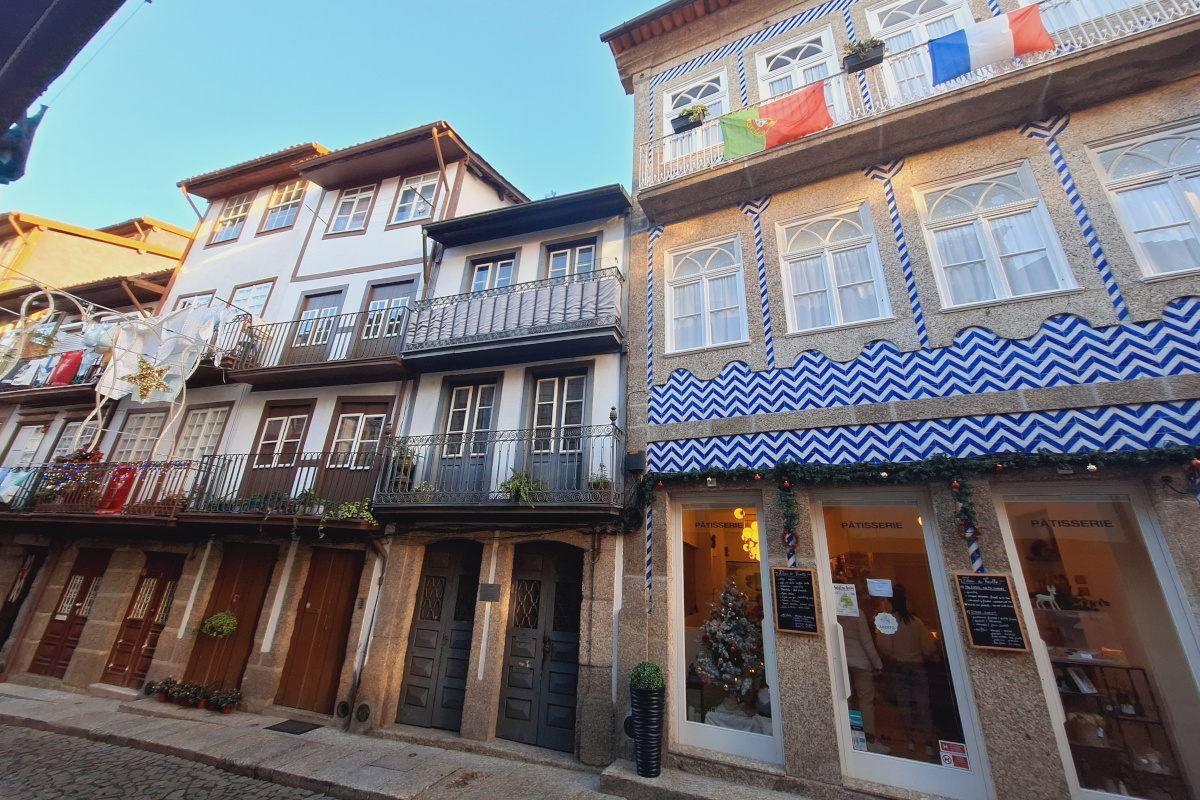
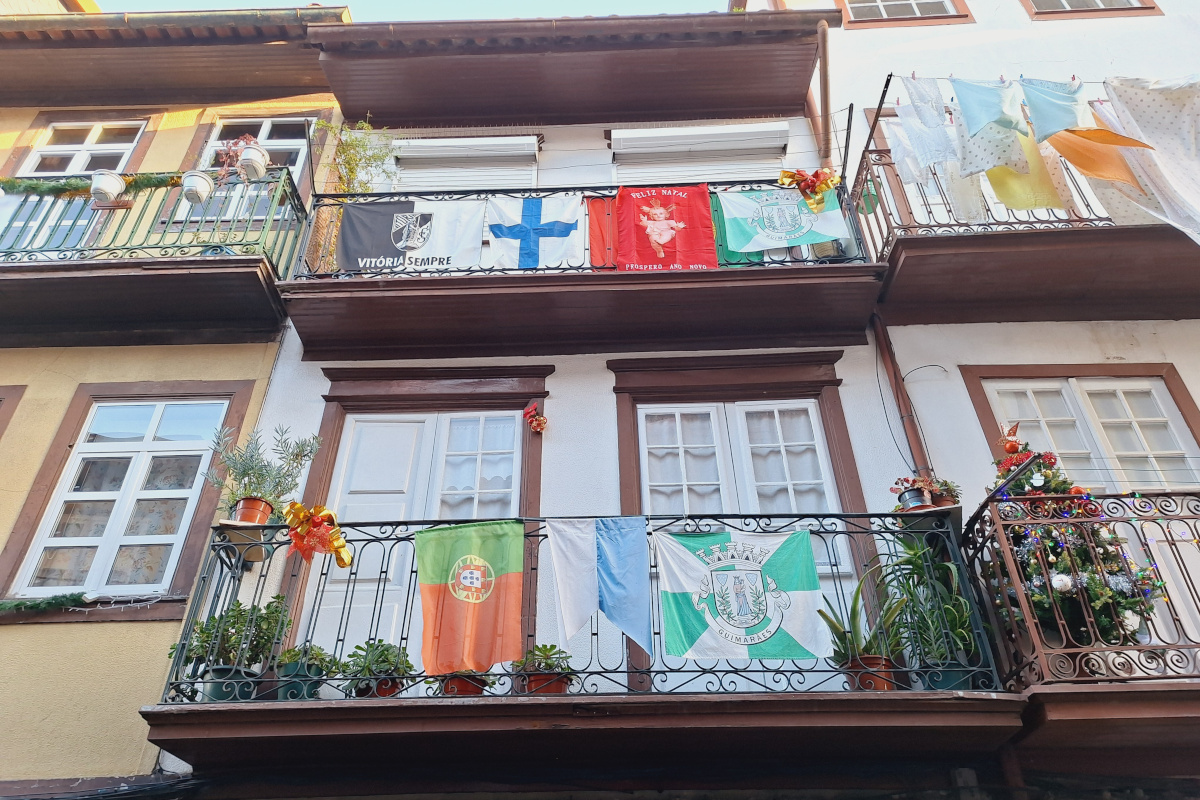
Guimarães was founded in the 4th century and became the first capital of Portugal in the 12th century. We fell in love with the small cobblestone streets, medieval architecture, and vibrant squares of the city center. The cobblestone streets are easy to walk through, offering the chance to discover great little shops and restaurants. Its historic center, a UNESCO World Heritage Site since 2001, was truly beautiful, and it was evident that there were more tourists here compared to Braga. The streets in this city were also decorated with lights and Christmas ornaments, though they were less spectacular than those in Braga. We also passed by a flea market offering a variety of antiques and collectibles, located under the columns of the Old Town Council Chambers (Antiga Câmara Municipal).
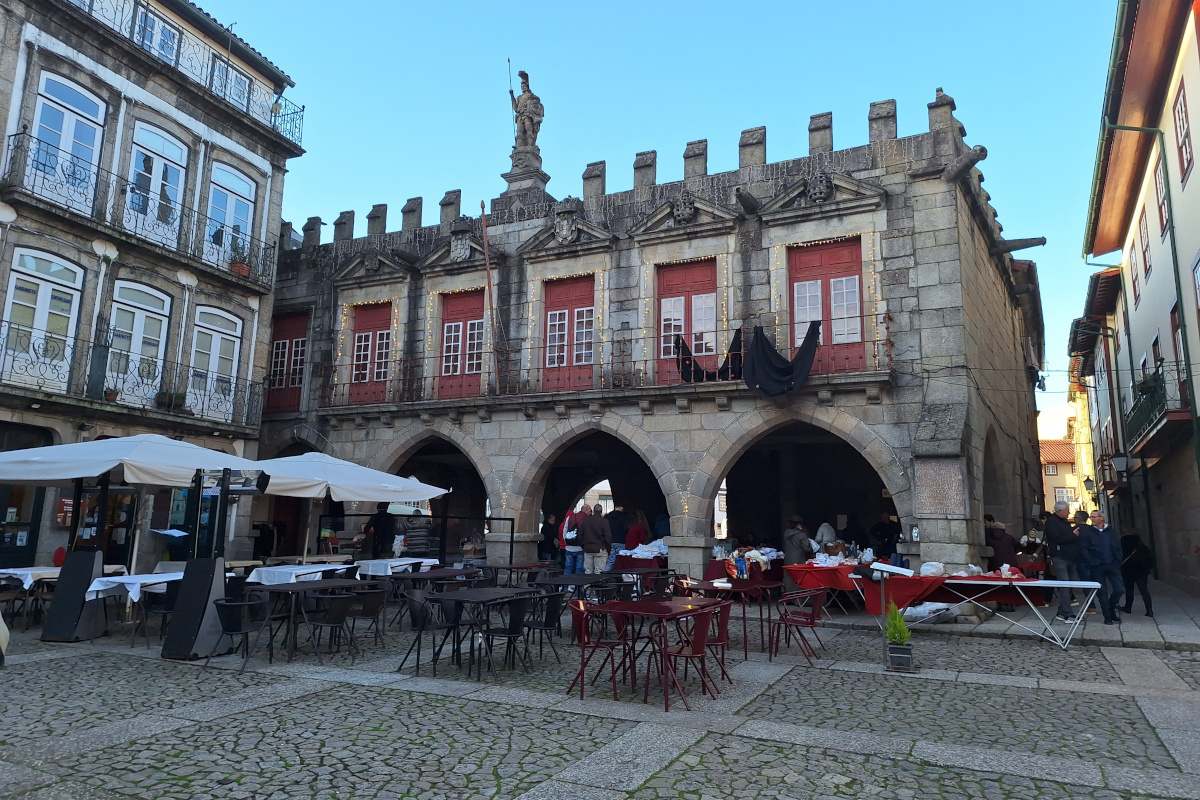
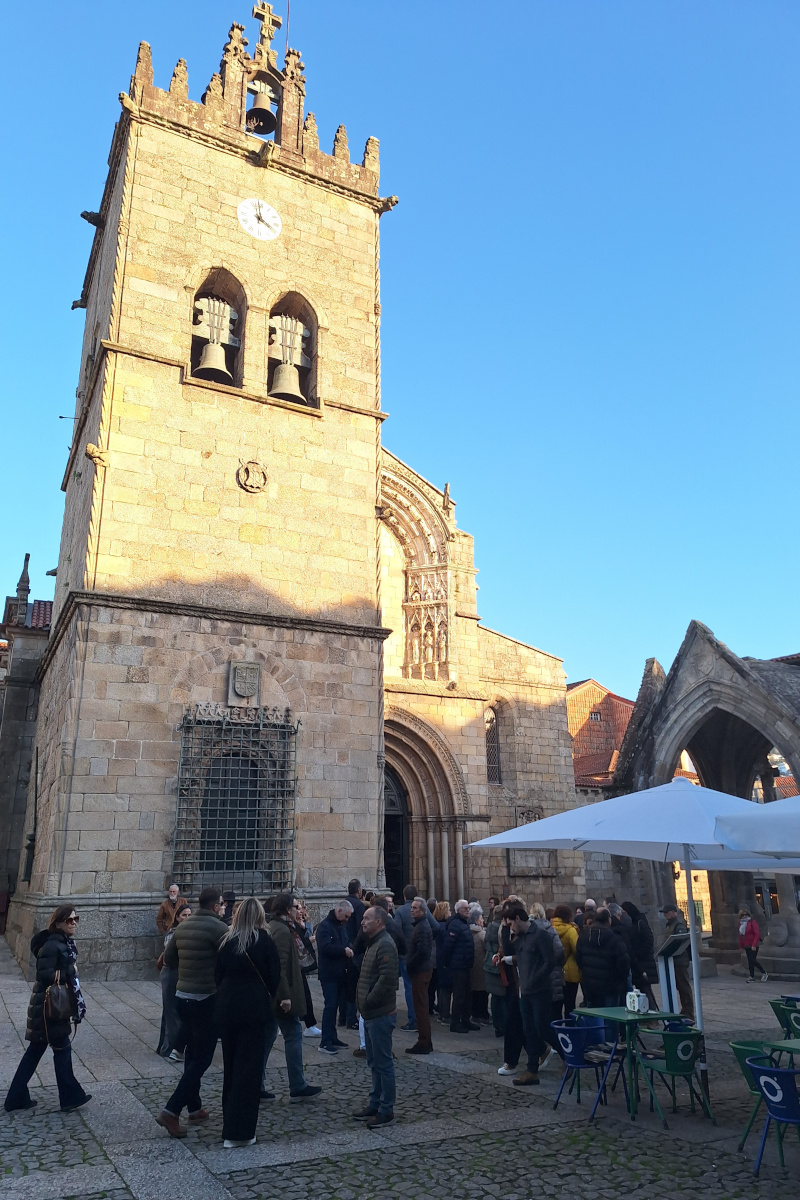
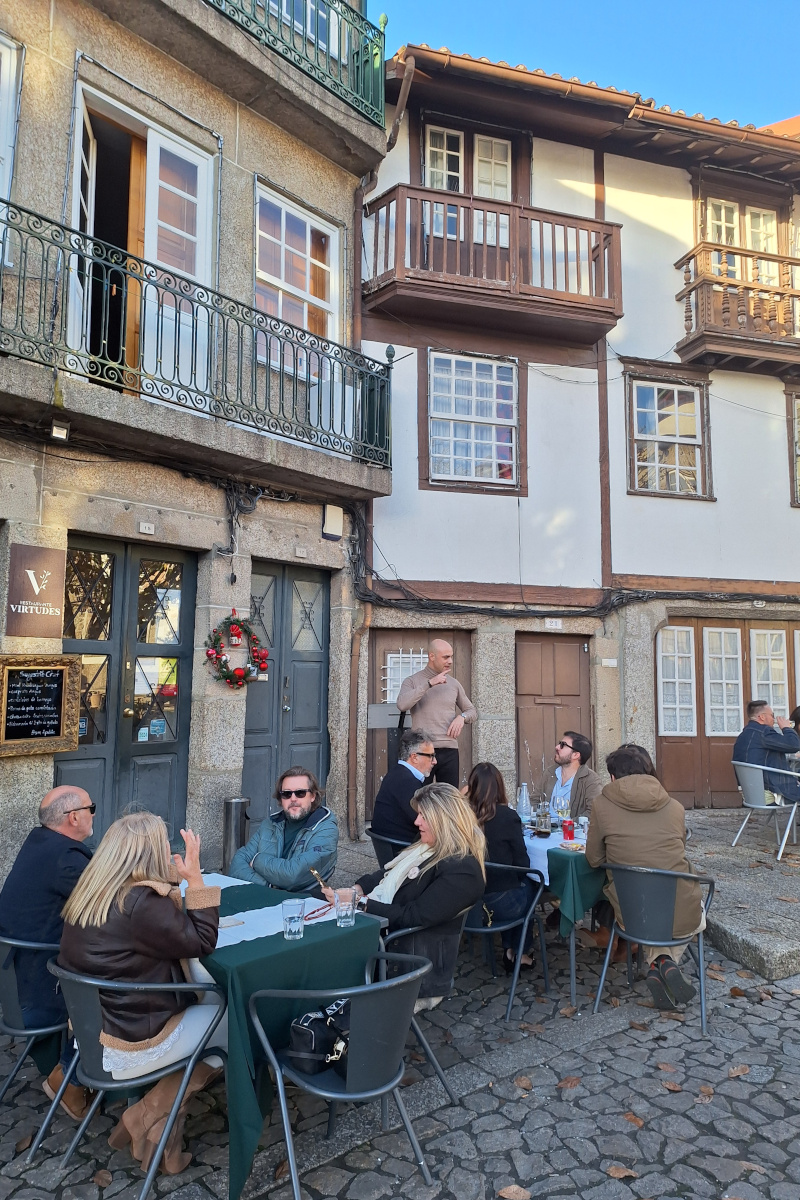
One of the main landmarks of the city is the 10th-century castle, located on a hill overlooking the town. The primary role of the castle was to protect the nearby monastery and its residents from Moorish and Norman invasions. It is believed to be the birthplace or early residence of Afonso Henriques, who declared the country’s independence after the Battle of São Mamede in 1128, which took place near the castle.
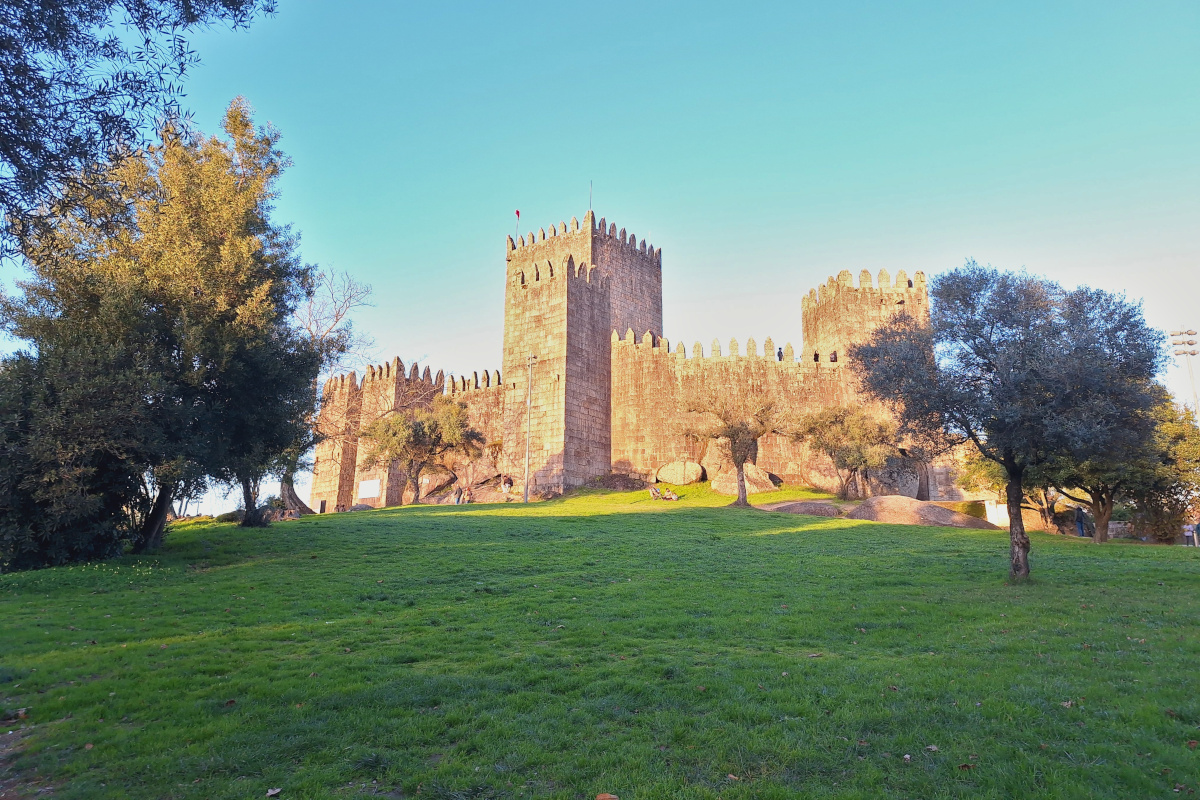
We explored the interior courtyard, climbed the towers, and walked along the eight towers, which offer panoramic views of Guimarães. The sunset view was stunning, and we could also see the Sanctuary of Penha, located on a nearby hill. According to my friends, it’s a lovely place to visit if you have more time, popular for weddings because the view from there is spectacular. The sanctuary, built in the 1930s, is an example of modernist architecture. Monte da Penha is covered in forests and massive granite boulders, making it a perfect spot for nature lovers and hikers. Located at an altitude of around 617 meters, the sanctuary offers breathtaking panoramic views of Guimarães and the surrounding countryside.
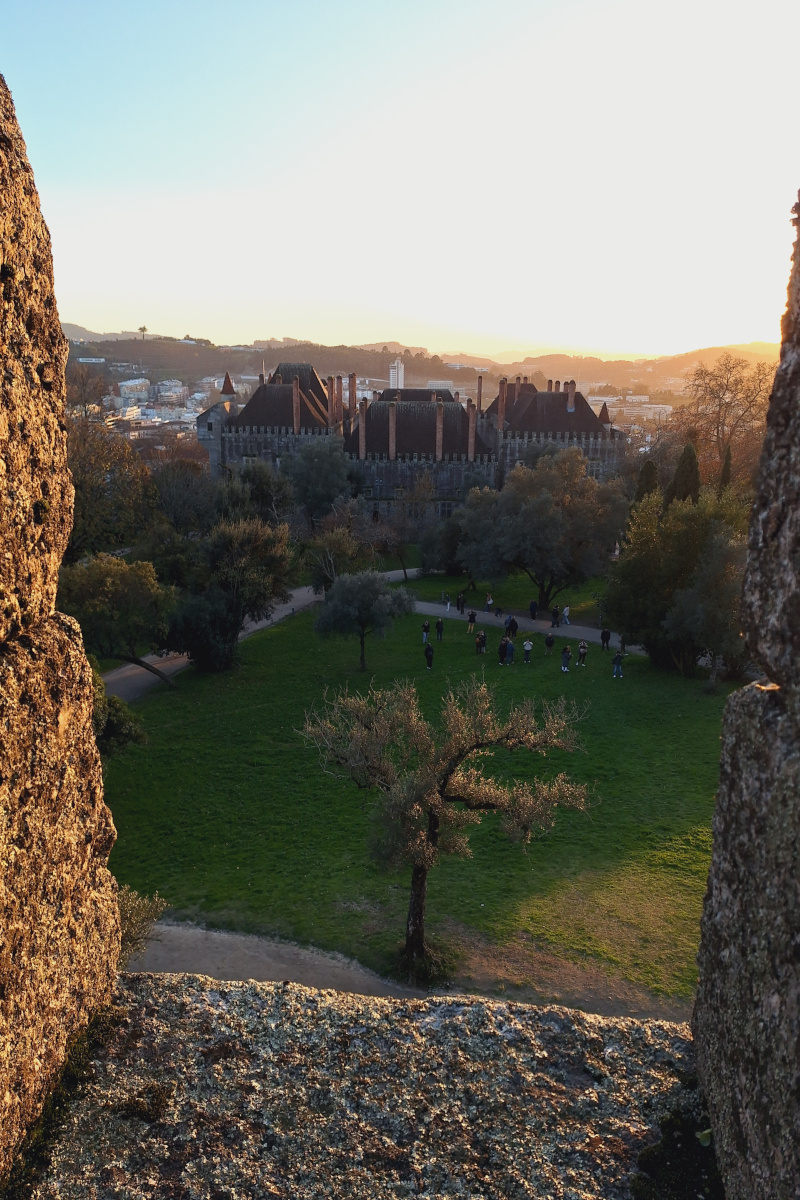
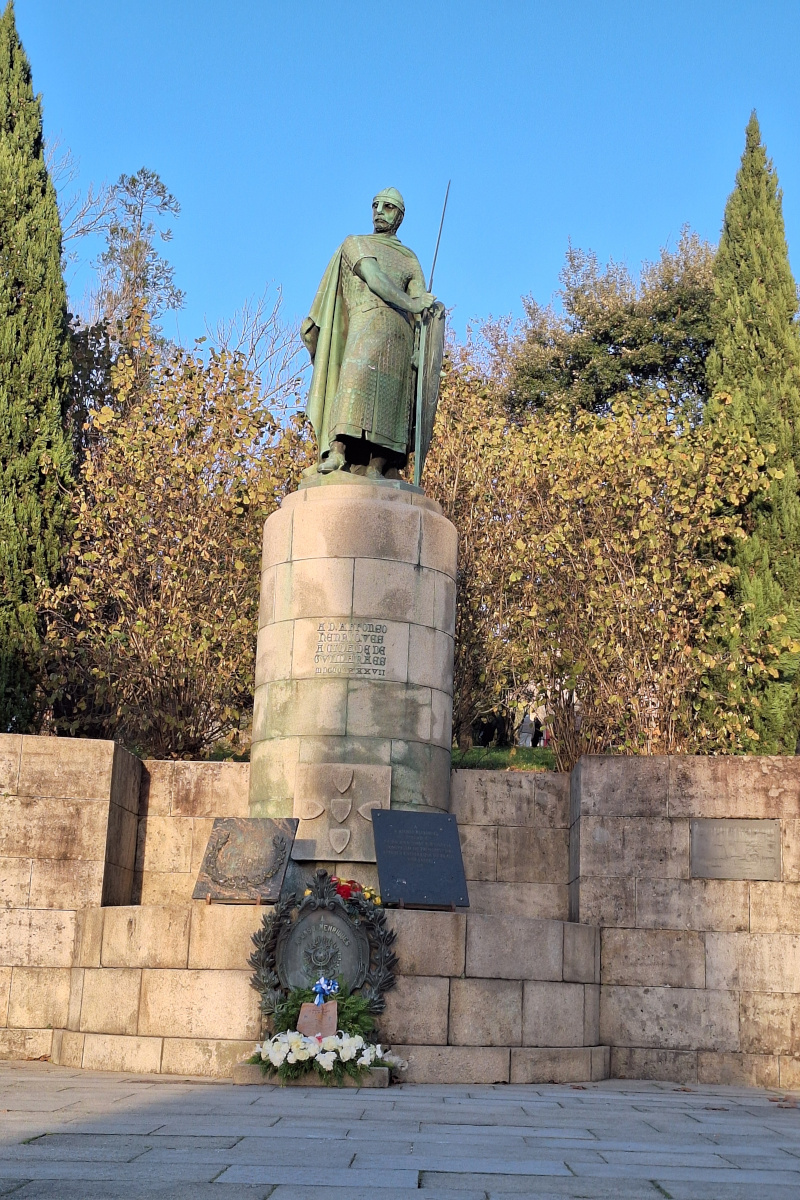
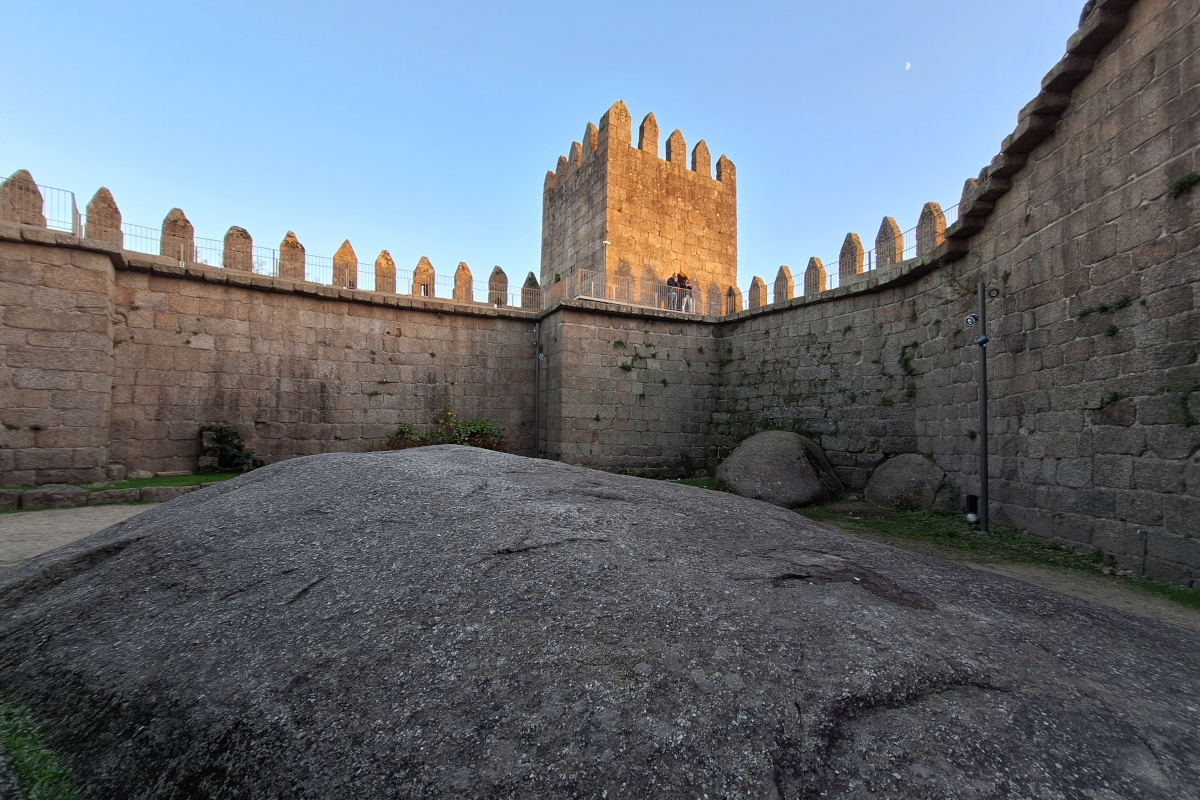
This castle is not just a fortress—it is a symbol of Portugal’s national identity and independence. Its well-preserved structure, combined with its historical importance, makes it a must-see destination for anyone exploring the roots of the Portuguese nation. It is also part of the UNESCO World Heritage Site designation for the Historic Centre of Guimarães.
Practical info:
- From Pedralva, take a local bus to Braga for just €2 (around 40 minutes, tickets available from the driver) or opt for an Uber ride for €14 (20 minutes).
- Santa Maria de Braga Cathedral: Entry ticket €2, includes a small museum.
- Sanctuary of Our Lady of Sameiro: Large, free parking area located just below the church.
- Bom Jesus do Monte: Upper parking costs €1, located next to the church. Funicular tickets are €2 for a single trip or €3 for a round trip.
- Restaurants we visited:
- Tíbias de Braga: A pastry shop offering local delights like tibias. These light, slightly crunchy pastries are filled with soft pastry cream and sprinkled with sugar. I tried the lemon-flavored one, which was tasty but a bit too sweet for my liking. Address: Av. São Miguel O Anjo 5, 4700-210 Braga, Portugal.
- Casa das Natas: A pastry shop offering amazing Pastel de nata, just next to the main city bus station. Address: 4, Pç. da Galiza 8, Portugal
- Taberna Belga Known for its francesinhas. This place doesn’t accept reservations, so there’s often a queue even before opening time. A waitress waits outside to take down names and the number of people. Once the restaurant opens, names are called systematically to avoid chaos. We arrived just before opening time and waited 20 minutes to get in. By the time we left, the queue was significantly longer, so arriving early is a good idea. This dish was way too heavy for me because of the amount of sauce, even when taking half of the portion!
- Rotiveminho: Serves traditional Portuguese dishes. Very popular, we arrived just before opening time and there were no free tables 20minutes later (most of them were with reservation). We tried salmon and it was very tasty. Address: R. do Raio 301, 4710-924 Braga, Portugal.
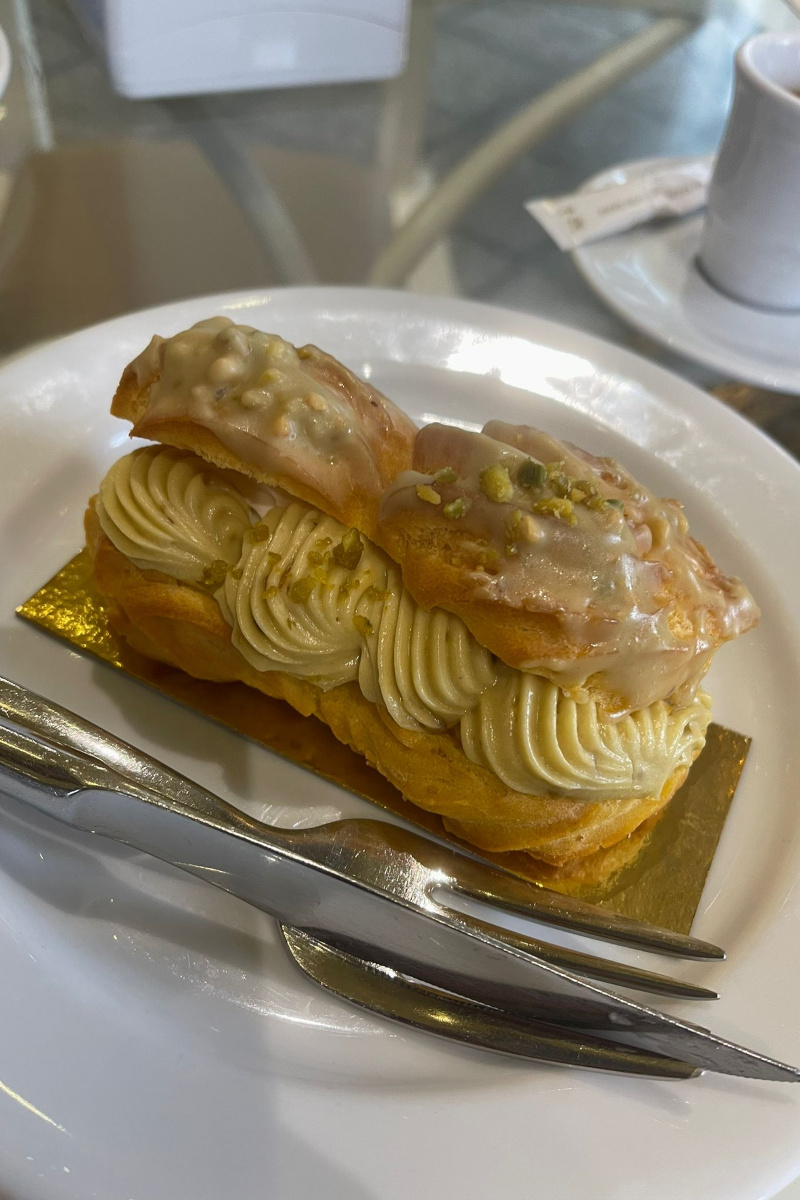

- Guimaraes: We parked on Av. Dom Afonso Henriques street (coordinates: 41.436881, -8.295615), which offers free parking. A nearby side street, Rua da Indústria, also has many new parking spots (both streets are one-way).
- Guimarães Castle: Entry ticket €2 Learn more here. There is a huge parking area behind the castle, which might be a good spot to park your car while visiting the city.
- Palace of the Dukes of Braganza (Paço dos Duques de Bragança): Located next to the castle, entry ticket €6. We didn’t have time to visit the palace, but according to Google reviews, it’s really worth checking out. This medieval estate was built in the 15th century and served as a noble residence for the Dukes of Braganza until the 16th century. The palace was restored in the 20th century and converted into a museum with a fascinating collection that includes 15th- and 16th-century furniture, ceramics, medieval arms, Portuguese art, and many artifacts related to the history of the Braganza dynasty.
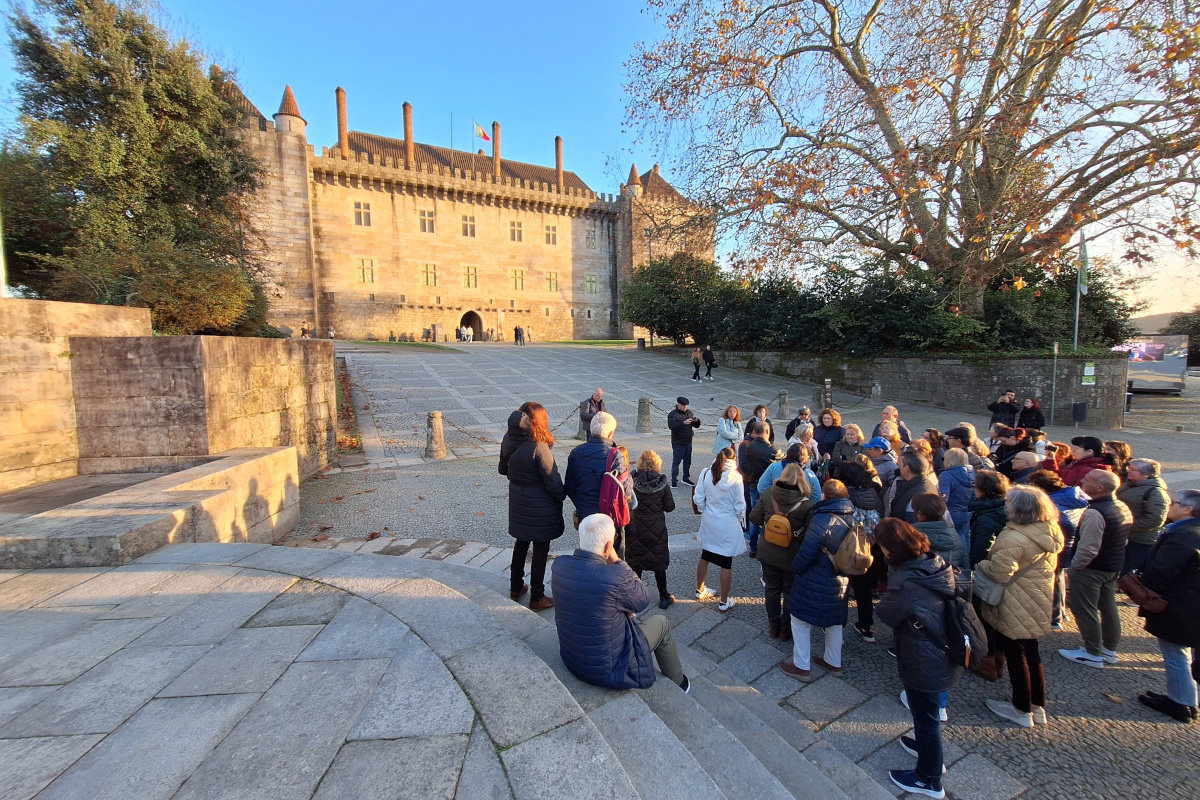
Subscribe via RSS
